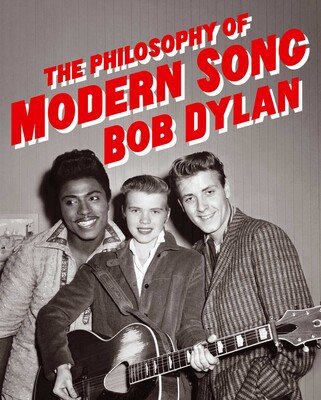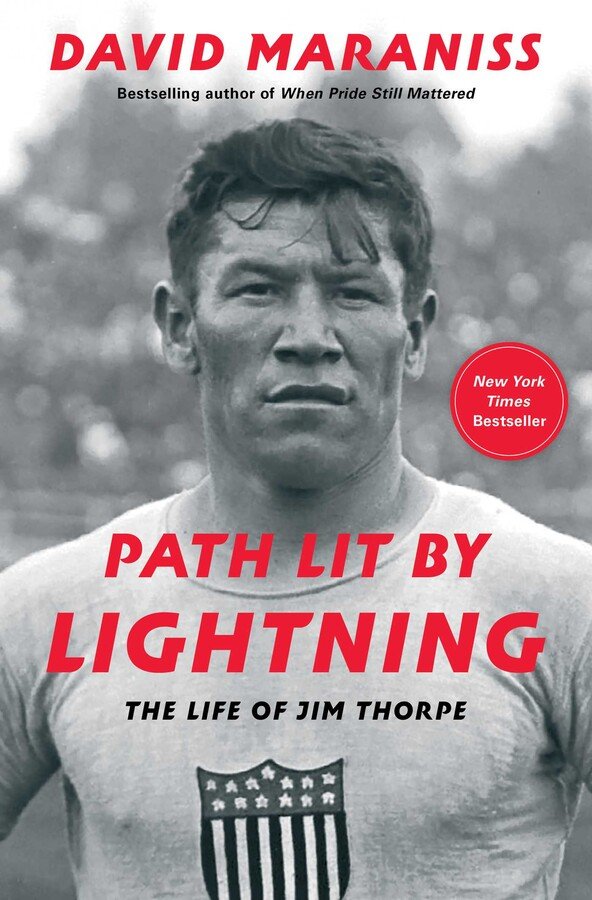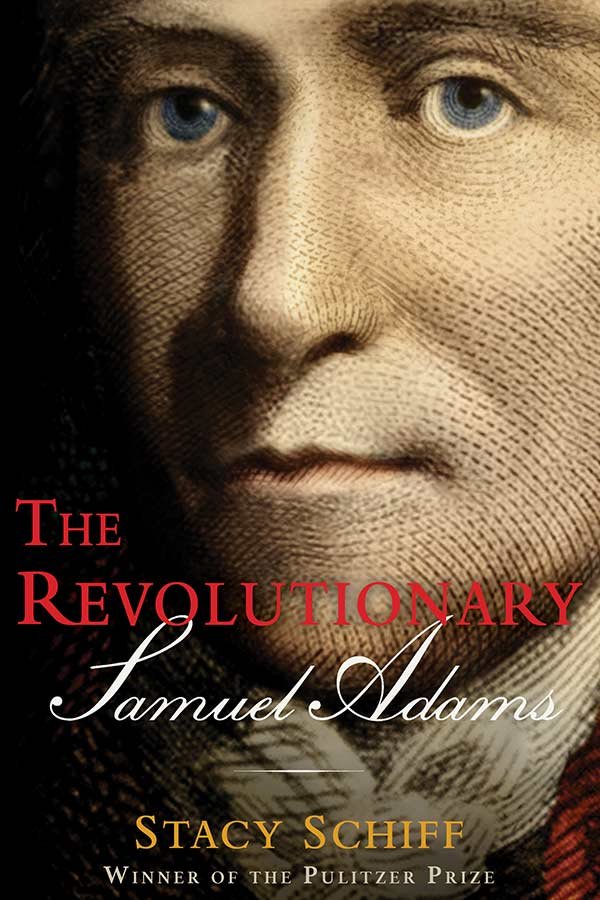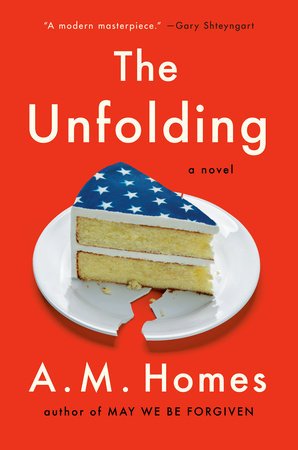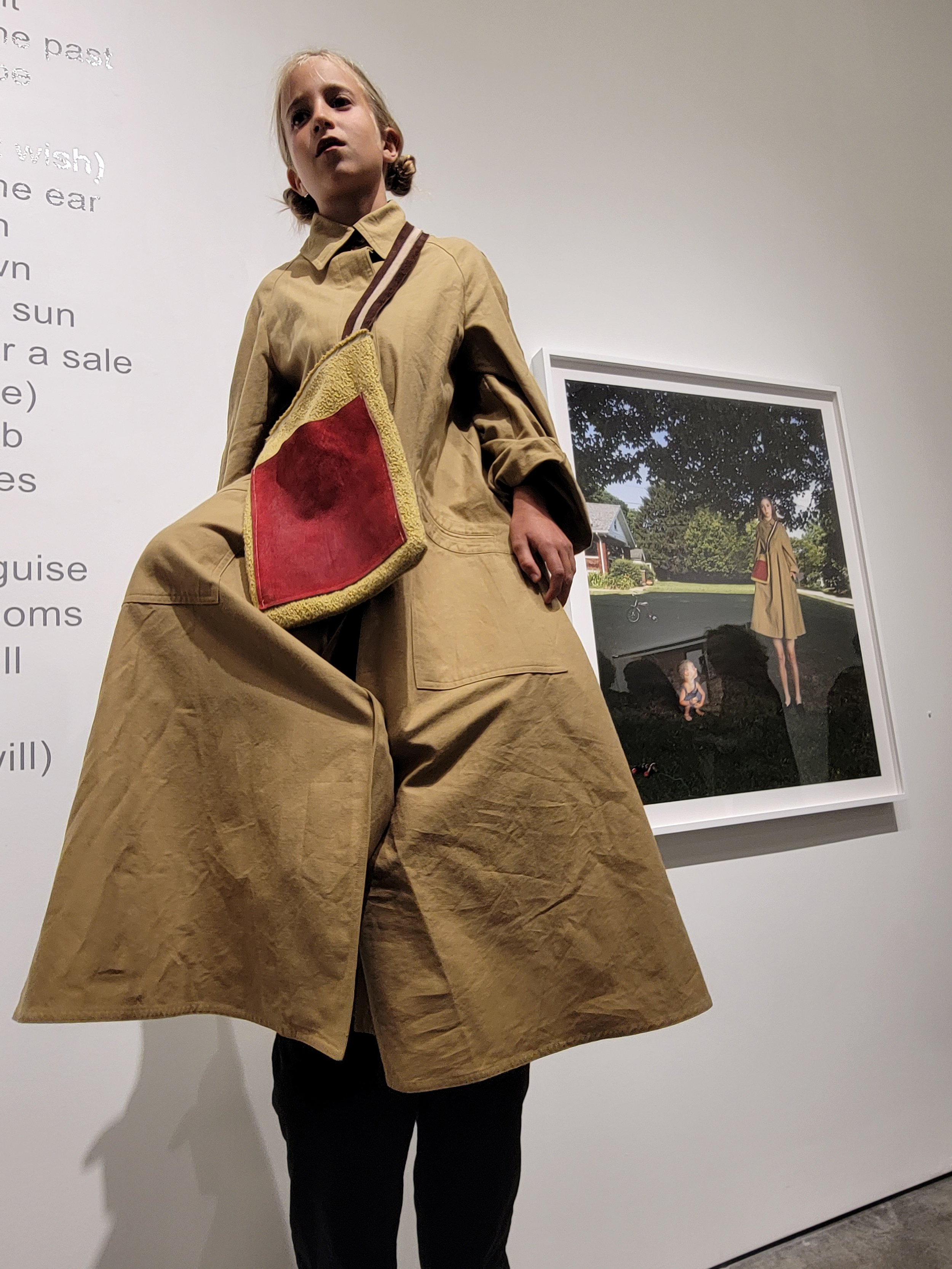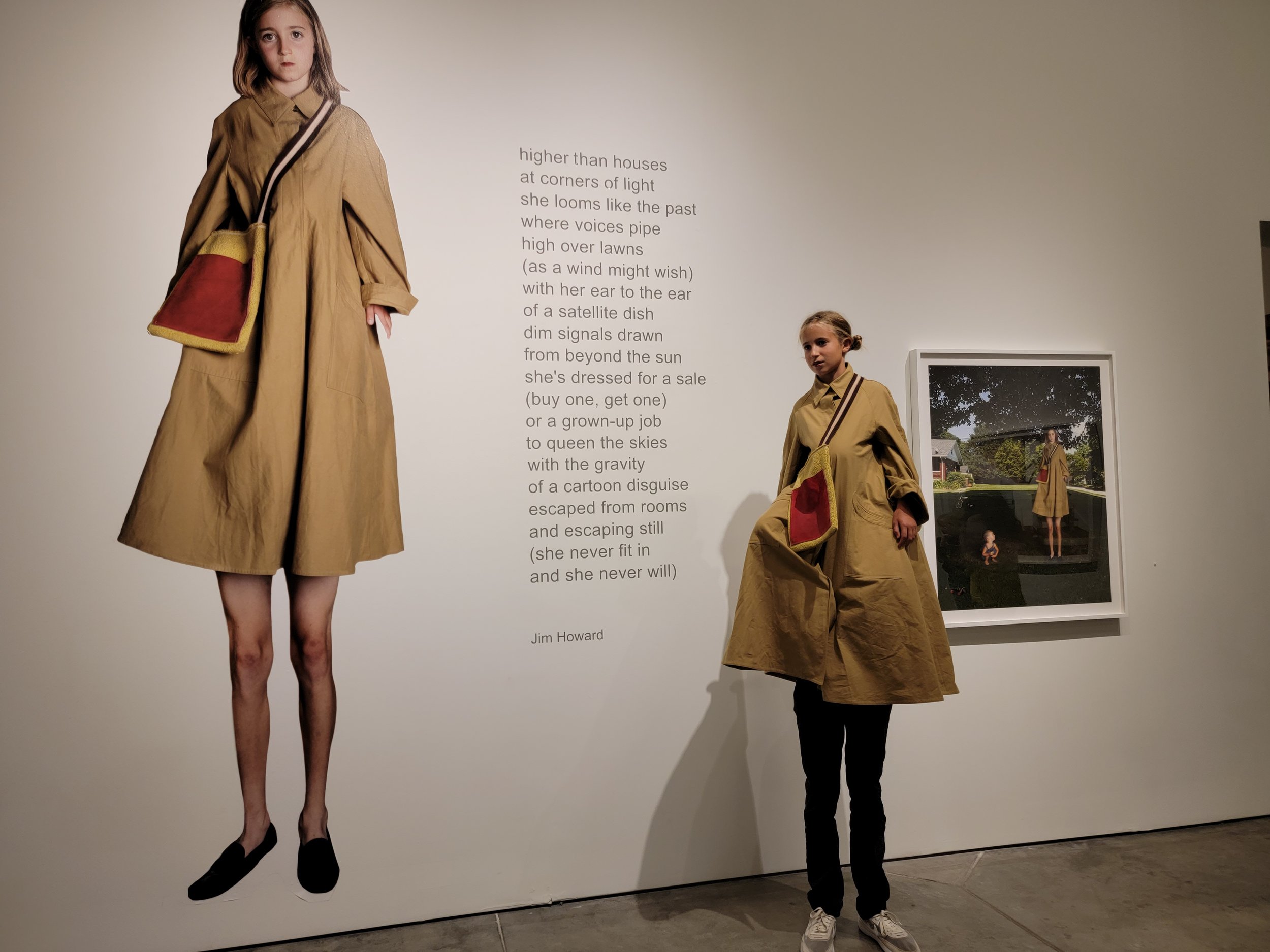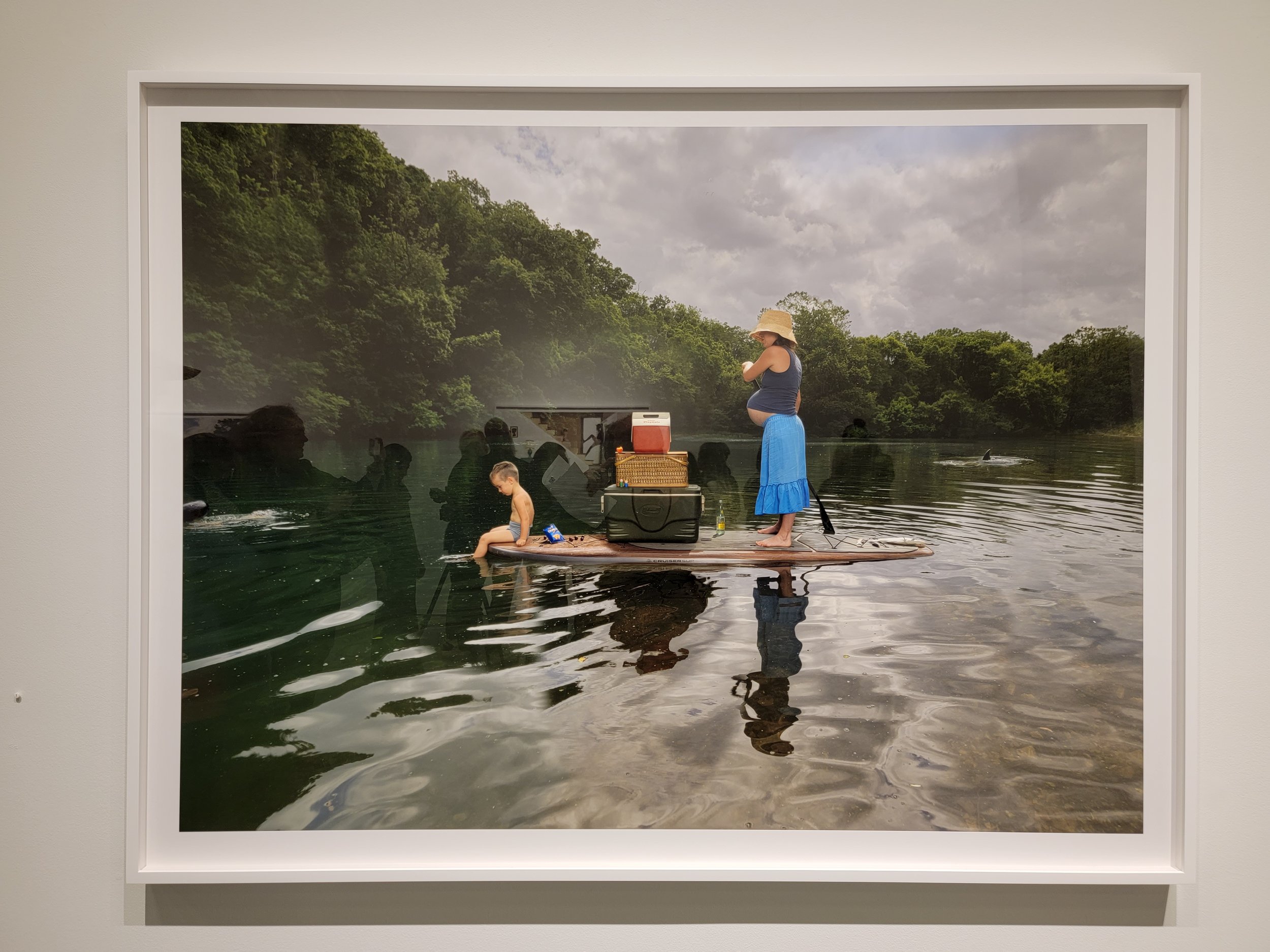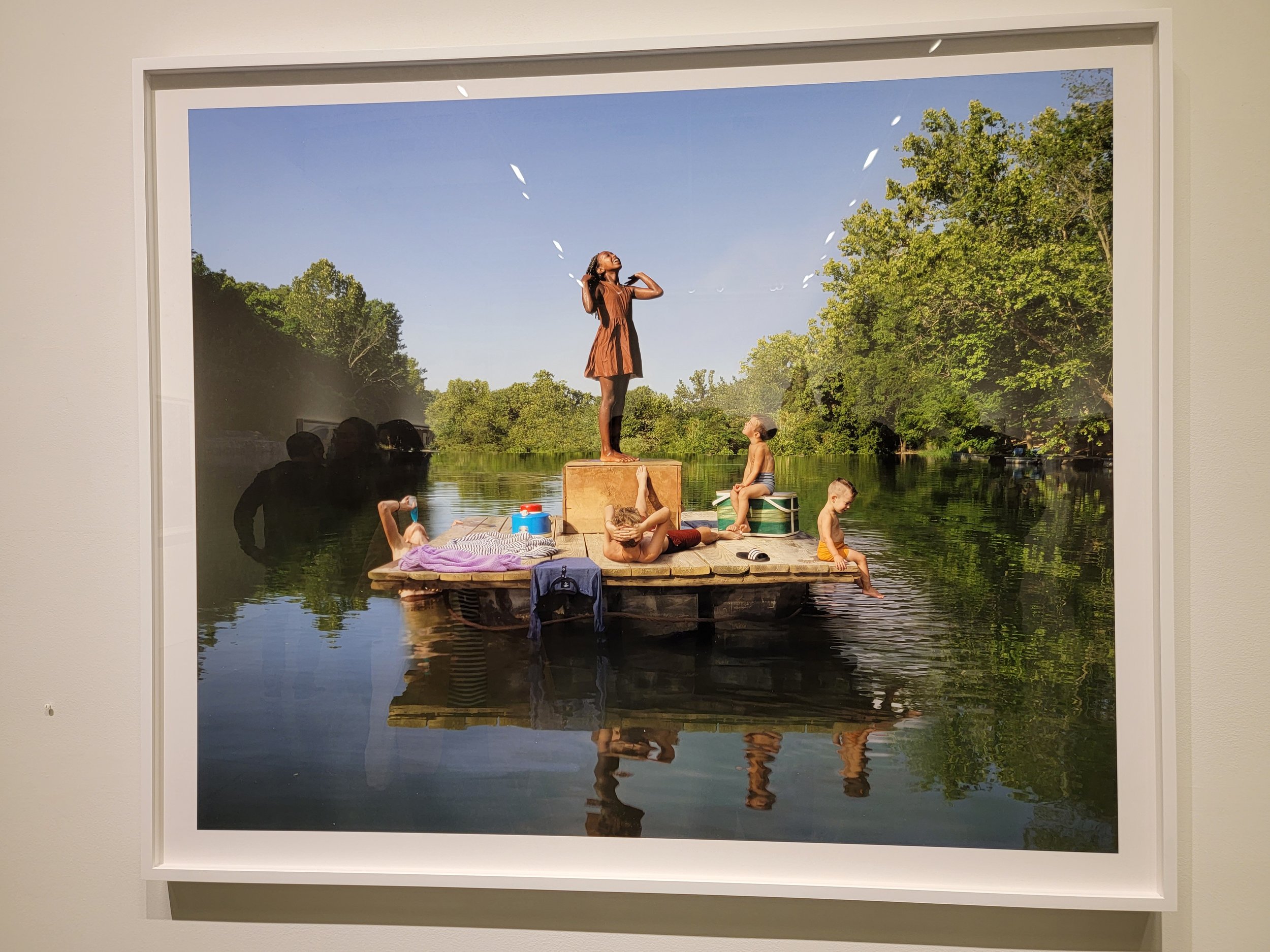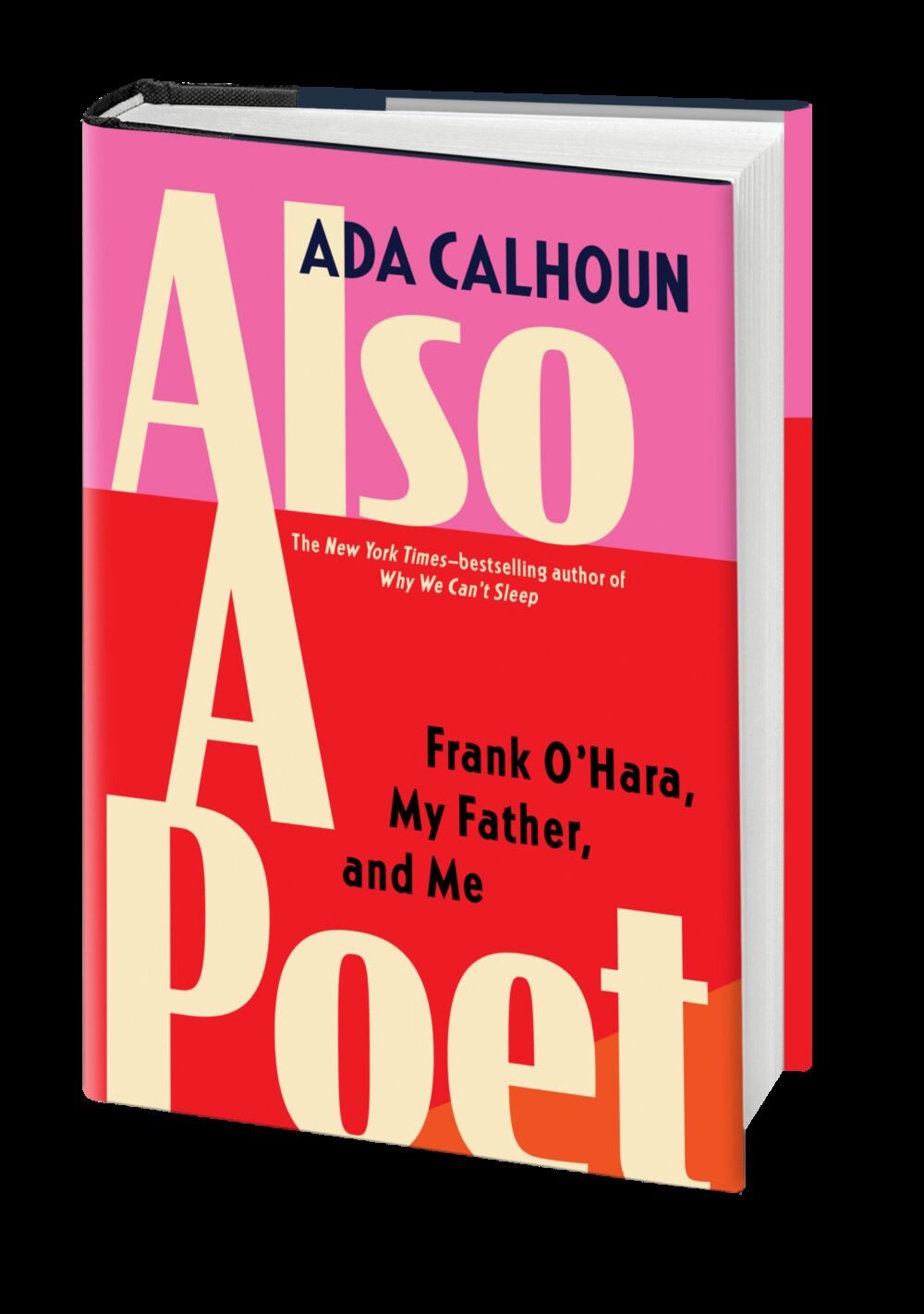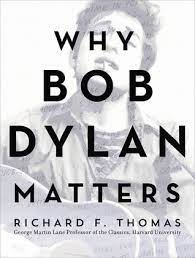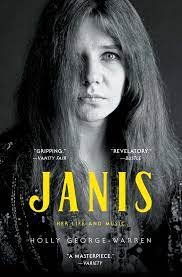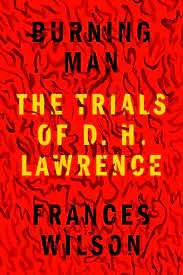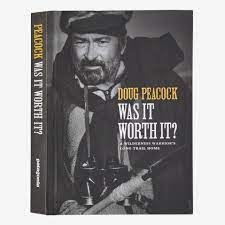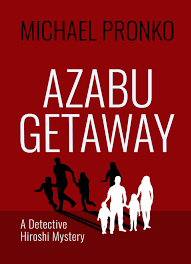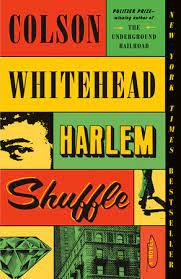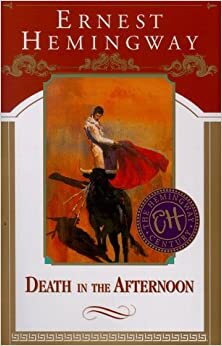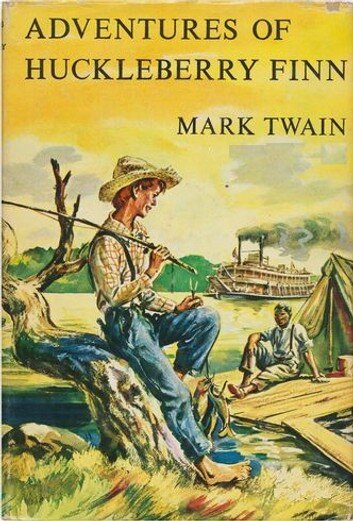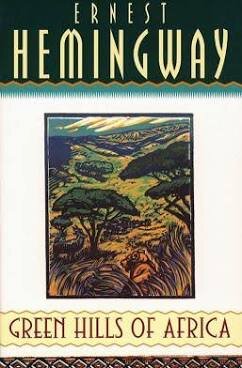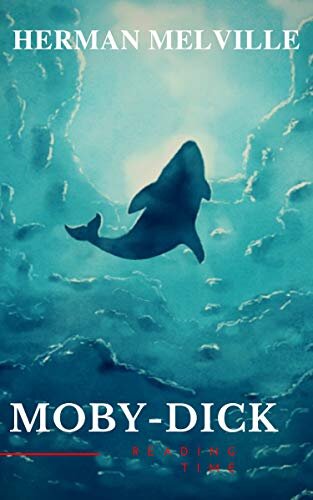The Kansas City Star’s Judy Thomas wrote this week about the death of Leonard Zeskind, a Kansas Citian committed to researching and uncovering the many tendrils of white nationalism in the U.S. His landmark book on the project was one of hundreds recently purged from the library at the U.S. Naval Academy by the reckless administration, Judy reported. In 2009, I wrote about the book upon its release, and reading about it again, in this fraught moment of authoritarian and right-wing fervor, speaks to its utter timeliness and timelessness. In visits with Zeskind at his office at the time, a labyrinthine lair lined with file cabinets, he displayed both a sly sense of humor and utter seriousness about his work. In one moment, he beseeched me to aim a bottle of lubricant into his eyes. That was a first in my newspaper career. The story below first appeared on page 1 of The Kansas City Star on May 18, 2009.
steve paul
The Year in Books: Recapping Some Reading from 2024
By STEVE PAUL
(c) 2024
Belatedly posting some notes about memorable books from year now past. Somewhere around Thanksgiving I returned to KCUR’s “Up-to-Date” with Steve Kraske to discuss some of my favorite reads of the year. I’m posting a few of my notes here, followed by lists of other books I spent quality time with.
Here are the highlights from the radio show:
Percival Everett: James (Doubleday). Winner of the National Book Award and other honors this year, Everett’s novel retells the story of Mark Twain’s Huckleberry Finn through the consciousness of that classic’s Black character, known as Jim. Everett’s James is smart, literate, philosophical, courageous, cagey, and his story of escape, survival, adventure, danger, and the complicated bonds with Huck is unforgettable. I listened to the audio version of the novel and was riveted from beginning to end.
Donna Seaman: River of Books: A Life in Reading (Ode Books/Seminary Co-op). Not just because Donna Seaman is a friend, her memoir of a lifetime devotion to the essential act of reading is a delightful and winning procession of connected essays. A longtime staffer at the American Library Association’s advance-review journal, Booklist, she has recently ascended to editor-in-chief. Her story of a rebellious, smart childhood in rough-edged Poughkeepsie, New York, being the loving daughter of loving and reading parents, includes a year or so in Kansas City in the 1970s when she attended the Kansas City Art Institute. The book is infused with literary tributes, artistic and creative impulses, and despite episodes of personal loss, a spirit of generosity, love of the natural world, and human fellowship. Anyone who loves books and identifies as a chronic reader will recognize a kindred spirit and compare influences and reading lists with those that Seaman shares.
Alexis Pauline Gumbs: Survival Is a Promise: The Eternal Life of Audre Lorde (Farrar Straus Giroux). This deeply imagined and unconventionally constructed biography tells a compelling life story, tracing Audre Lorde’s journey from tough and emotionally challenging childhood to her status as beloved poet, lesbian activist, and spiritual thinker. Gumbs brings a poetic eye and empathetic sensibility, especially toward Lorde’s themes exploring science, nature and the physical and metaphorical universe.
The Harlem Renaissance and Transatlantic Modernism, edited by Denise Murrell (Metropolitan Museum of Art/Yale University Press). In the category of art and “coffee-table” books, this is the huge and handsome catalogue of a major retrospective exhibit that I saw earlier this year at the Met in New York. The sheer variety of style, craft, imagery, and narrative content of these works proves how far from monolithic the creative movement we call the Harlem Renaissance really was. There’s intimate portraiture, vibrant street scenes, abstract collage, and stunning representations of the range of humanity that made up the African American experience in the 1930s and beyond. One particular revelation, for me, were the lovely portraits and lively, boozy social canvases by Archibald Motley. Another involved dwelling on a familiar mural by Aaron Douglas and realizing how it resonated with the kind of political engagement to be found in Picasso’s “Guernica.” This book is filled with insightful scholarly essays that provide broad context and detailed focus on many of the individual art works.
Wright Thompson: The Barn: The Secret History of a Murder in Mississippi (Penguin Press). Extraordinary and riveting narrative that recounts all the threads of American history that led to the torture and killing of Emmett Till, a 14-year-old Black boy, by white men in 1955. This essentially is the biography of a place, a small patch of the Mississippi Delta, which also happens to contain the family home of the author. Thompson, an award winning writer who once wrote sports stories at the Kansas City Star, performed an enormous amount of research as he interweaves his own story and his quest through deep history and the murky legacies of the civil rights-era tragedy that still resonates today.
Samantha Harvey: Orbital (Atlantic Monthly Press). Recent winner of the Booker Prize, this short novel becomes a meditation on human existence, prompted by the narrative’s setting inside the minds and lives of six International Space Station occupants as they speed around the planet. It’s a lyrical and evocative read, though one that some readers might find to be periodically precious. This was another book that I absorbed by listening, an audible experience that was uplifting, cosmic and often hypnotic.
Rachel Kushner: Creation Lake (Scribner). There’s an unusual setup as a mysterious central character, an American woman who may or may not be named Sadie Smith, wangles her way into a collective of French environmentalist rebels. A cult leader’s lectures on human history and the legacy of Neanderthal life in the workings of the modern world give the novel some intellectual heft. The main character’s relationships, sexual drive, and subterfuges provide loads of tension and propulsion as the novel unfolds.
Much of my reading these days involves biography, given my involvement in Biographers International Org. Early in 2024 I caught up with the five finalists for the 2024 Plutarch Award, honoring the best of the prevous year: Each of these five books took a different approach to biography, illustrating, for me, the great range that the craft of biography (as distinguished from autobiography and memoir) spans today.
Jonathan Eig, King: A Life (Farrar, Straus and Giroux)
Howard Fishman, To Anyone Who Ever Asks: The Life, Music, and Mystery of Connie Converse (Dutton)
Lisa M. Hamilton, The Hungry Season: A Journey of War, Love, and Survival (Little, Brown and Company)
Prudence Peiffer, The Slip: The New York City Street That Changed American Art Forever (Harper)
And the Plutarch winner: Yepoka Yeebo, Anansi’s Gold: The Man Who Looted the West, Outfoxed Washington, and Swindled the World (Bloomsbury)
More recent reading and biography titles to come.
From the Archives: That Time Gillian Flynn Tried to Kill Me
With Gillian Flynn, the Gone Girl goddess, coming back to her hometown soon, why not flash back to the feature profile I put together in 2012. At the time, Flynn’s writing career and personal life had begun to soar. She graciously allowed me to visit with her in her Chicago home and to follow along as she appeared at a bookstore reading. That’s when it got really interesting—though I left this little detail out of my magazine piece. (Why oh why? It shoulda been the lede, maybe?) I was a passenger in Flynn’s car as we returned to her place from the suburban bookstore. At one busy intersection, she made a left turn…INTO THE WRONG, ONCOMING LANE, if I recall correctly. It didn’t take long to correct the driving error, but still. We joked about how maybe she was having the impulse to bump off this nosy writer. Whatever. Maybe she tells the story differently. Maybe she doesn’t even remember it. Although we shared a stage once in an event for the Mid-Continent Library, we’ve had little to no contact ever since. It certainly has been fun to follow her projects over the years, and nice to hear that she’s struggling to work on another novel. In any case, I’m sharing here the magazine pages of that story, published just about a dozen years ago, Nov. 12, 2012, in The Kansas City Star Magazine (remember when?). Some of the photographs are mine; I was happy to line us up with my friend Emily Railsback, who had recently resettled in Chicago, to shoot the cover portrait.
Travel Journal: Turkey (Türkiye), an 'Ever-Evolving Mirage'
After a long week’s journey to Istanbul and the Cappadocia region, I’ve been sorting photographs and diving into my notebooks to pull together some mostly coherent impressions. What I’m posting here still seems raw and incomplete, but I hope it captures some of the essence. I’ll also be posting selected pictures at this site’s photography page, Available Light and Shadow.
All content is (c) Steve Paul, 2024.
6 October 2024, Istanbul
We spent an extended week in Turkey, bookended by a long day of travel to get there and two long days of travel coming home.
I hadn’t really focused on how enormous a city Istanbul had become. Current estimates of 20 million people are common, though we heard numbers even higher. The population may have swelled in the aftermath of two earthquakes that ravaged several central cities of the country in 2023. The subsequent migration and infrastructure damage has led to a painful economic crisis marked by rampaging inflation, though it was hard to see how that was playing out in daily life of the city from our limited, tourist perspectives. What we saw was a bustling, crowded place, with pockets of modest or impoverished dwellings punctuated with new construction, renovation, and what felt like tourism-driven abundance.
Blue Mosque
Our hotel, the Ottoman-inspired Armada, was in the Sultanahmet district, just a 10-minute walk from some of the most historic and popular sites, including the Hagia Sofia, the Blue Mosque, and the Basilica Cistern. It was another 10 minutes on foot to the Grand Bazaar. Because we arrived in the late afternoon, our opening itinerary included a rooftop reception and dinner. After some intermittent raindrops, the evening unfolded nicely, and we dined on a typically fabulous spread of small plates (meze) and sweets. Overlooking the terrace was the Blue Mosque, which was bathed in white and violet lights.
Because we were a group of musicians and music aficionados, we were treated to a mini-concert by a quartet of Turkish musicians, which helped set an important tone and thread of our visit.
Our welcoming band.
7 October, Istanbul
I know it’s impossible for a traveler to parachute into a country and even try to get a handle on its character. Perhaps because our friends who arranged the journey had much experience and many connections, our days here were filled with congeniality, not too many travel hassles, and many pleasant surprises. And perfect weather, too.
One guiding thought I had in mind wherever we went in Turkey was the writer Orhan Pamuk’s description of his country and his native Istanbul as an “ever-evolving mirage.”
A few random street scenes here:
***
View from the Bosphorus.
Getting to know Istanbul almost has to begin with the Bosphorus. It’s the physical and metaphorical axis that defines this vast city’s place in the world. It separates East from West, Europe from Asia. It’s part of the nexus of commerce and trade that has connected (and divided) so many cultures over the centuries. Our group had a choice opportunity to experience the Bosphorus on a private boat tour, complete with food and wine and glorious late afternoon breezes. We had views of historic palaces, of the famed Galata Bridge, of so much of the vibrant waterfront even despite the presence of rather monstrous-scale cruise ships—two more in addition to the Queen Victoria.
Cruising on the water as the sun was setting and the moon rising was a visual and visceral high point of our journey.
8 October, Istanbul
Our travel priorities always include what we can find in the visual arts, and we were quite taken with Istanbul’s relatively new Museum of Modern Art. The privately funded non-profit institution is a decade old, but it reopened just last year (2023) in a crisp and bright new building by the architect Renzo Piano.
A featured exhibit while we were there was by Olafur Eliasson, whose work I’ve long admired. He’s a sculptor of light and color, of metal and wood, of glass and optical illusions. I’d like to go in-depth about the exhibit, but will save some of that for later. Eliasson’s major concerns over environmental decay and climate change result in works that are both in your face and subtly melancholic.
Olafur Eliasson
Elsewhere in the museum we walked through the permanent exhibit of artists we were wholly unfamiliar with. But we were struck by the presence of significant forays into abstract expressionism, particularly by one or more female artists.
I’ve got very mixed feelings about AI developments in the cultural and creative world. But it’s hard to deny the entertaining visual appeal of the work being made by Rafik Anadol, a Turkish-American artist with a global practice. Like many people, I first encountered his super-sized, liquid-like wall extravaganza at the Museum of Modern Art, which transformed meta-data of the museum’s entire collection into a mesmerizing psychedelic experience. We happened to catch another Anadol production this summer, a special room-sized immersion at the Antoni Gaudí Casa Battlö in Barcelona. Now comes his pulsating immersion room at the Istanbul Modern, a piece that reflects and honors the Bosphorus. Blue and white tones cascade through the room like hyper-inflated waves. Mirrored floor and ceiling surfaces expand the effect all round you.
Walking out of one gallery and into a hallway I couldn’t help but notice a strange sight outside a wall of windows. It was a section of the Queen Victoria cruise ship, docked right there on the Bosphorus, within spitting distance of the museum. The geometric array of the giant craft’s cabins and rails made for an instant snapshot, a grand artistic gesture as if the slice of reality were hanging hugely on the museum walls (below).
***
Ezgi Karakus joins the musical enthusiasm at our group dinner.
An evening of fun, frivolity and fabulous food unfolded at the Hos Seda Balik Restaurant. After mounds of meze, a whole fish, and tastes of red Turkish wine, the long table erupted in music. And some spontaneous dancing.
9 October 2024, Istanbul
In preparation for the Turkey journey I poked around online to scout jazz clubs in Istanbul in hopes of finding a destination for one of our group’s unscheduled nights. Lo and behold, Istanbul’s Akbank Jazz Festival would be well under way offering numerous opportunities coinciding with our days there. Among the options was a concert featuring the American bassist Jamaaladeen Tacuma, whose funk-infused music I hadn’t heard for some years (decades). I was intrigued by the possibility of hearing him in the context of Turkish fusion, as he was appearing with a band led by the percussionst Burhan Öçal. I didn’t know of Öçal, but I came away bowled over and eager to hear more from him.
Turns out this concert was something of a reunion of sorts, given that Tacuma had recorded an album with Öçal a quarter-century ago (“Groove alla Turka,” 1998). The show even began with a big-screen projection of some documentary footage of that recording session. And it also was presented as a memorial tribute to another Turkish jazz hero, Mehmet Ulug, who died in 2013 and is remembered at this festival every year.
Guest rapper Gazapizm
The scene: Babylon, a large, standing-only concert space within what seems like an extremely vibrant arts center and cultural complex. In planning for the evening out, I couldn’t figure out from Google Maps where our group of eight jazzers could eat nearby beforehand, so we opted for a fine spot (details on this elsewhere) near our hotel and then cabbed over to find Babylon. When we got there, we discovered that an open-air plaza outside the joint was filled with festive restaurants and people, so that was a lesson learned. (Next time in Istanbul!)
The upshot was a high-energy concert, with eight or more players on stage, including horns, keyboards, violin, various percussion. The opening tune was “Nihavend Longa,” which dates back to “Groove Alla Turka.” (I found it on Tidal, though it’s likely available on other streaming services.) As an opener it highlighted an attractive blend of eastern and western jazz sounds. My experience might be somewhat limited, but this and other tunes on the set-list connected me with a memory of discovering the Lebanese-Parisian jazz fusion of Toufic Farroukh on a trip to Europe in 2002 (see Farroukh’s terrific album “Drab-Zeen”).
Tacuma introduced one tune with a plea for peace, kindness, and love, which was met with great applause. Called “Rahima,” it’s a gentle ballad named for Tacuma’s wife.
Toward the end of the set, the band was joined by a highly popular rapper named Gazapizm, who added an unexpected layer of vocalism to the proceedings. Another singer, whose name escaped me, joined to whip up more emotional vibes, helped close the concert.
We were deep in the crowd (not conducive to decent photos or video), and I was struck by the overwhelming youth of the audience. Not sure that we’d see quite so many young folks at a similar jazz concert in the U.S. Carol, my partner, not exactly a jazz fan, said she really enjoyed the show.
While back-filling for details, I found this link to an NPR show from not long ago featuring Tacuma, which is worth a listen (see link below photo).
Burhan Öçal, Jamaaladeen Tacuma, and a guest singer whose name I didn’t catch. At Babylon.
A Food Interlude
To discover the joys of Turkish cuisine is to recognize its close relationship to Greek and Middle Eastern foods. We enjoyed ubiquitous variations on hummus, baba ghanoush and tzatziki. Red pepper concoctions appeared on almost every buffet and table. At our luxurious hotel, I was turned onto the attraction of salad for breakfast, encouraged by our Turkish travel mate, Ezgi Karakus, to try the rocket lettuce, or mild, large-leaf arugula, sprinkled with lemon juice and oil. I experimented with using the leaves to wrap various cheeses.
Lamb shank at Mozaik, Görome, Cappadocia.
Best meal—so good we had it twice—was a lamb shank at Mozaik, a restaurant in Görome, Cappadocia. Moist, tender, falling off the bone; we learned from an insider that a chef’s secret was putting dates in the oven as the shank roasted, which added a subtle sweetness. Another high point was the series of delicious small plates, along with bottomless wines, that accompanied our private boat tour along the Bosphorus channel. The wooden boat belongs to the Armada Hotel, where we stayed just a stone’s throw from the water. I knew virtually nothing about Turkish wines, but sampled several throughout our stay and learned that wine production somewhere in or around Cappadocia could be as ancient as that in the Republic of Georgia and Shiraz, Iran. Another liquid attraction in Turkey is the ever present Raki, which is essentially a version of what we know from France as pastis, or Ricard—the delicious (if you like such flavors) anise aperitif.
Not long ago, the New York Times helpfully ran a feature story about the rise of female restaurateurs and chefs in Istanbul, which I happened to carry with me on the journey. Turns out that one of those restaurants, Giritli, was just around the corner from our hotel. Its outdoor patio was attractive and comfortable, and prix fixe menu was absolutely first rate. Our jazz-going crew started out there one night. The meze assortment was a filling starter plate, but I couldn’t resist the grilled fish as a main dish (sea bass, I think it was). And once again, the wine, a Bordeaux-style blend, was perfectly fine. I didn’t get around to peeking in the kitchen or trying to greet the chef; but our table service was super friendly and first-rate.
October 10-11, Görome and Uçhisar, Cappadocia
Cameras blazing at the post-ceremony tourist show at Saruhan
After a short flight from Istanbul to the Kayseri airport, one of our first experiences in the Cappadocia region involved a journey into history and mysticism. Pretty sure I can honestly say I’d never witnessed a Whirling Dervish ceremony, but here it was, twirling before our eyes inside a 13th-century caravanserai. I’m not exactly sure what links the spiritual event to the place, an ancient stop called Saruhan on the so-called Silk Road. But it’s now a tourist attraction. Visitors are invited into an interior arena and cameras are prohibited as initial silence turns into music and a quartet of men doff their black robes, step onto the stage and begin moving, clad in white tunic and skirt, in symbolic steps and spins. I was struck by a brochure’s note that the tall fez atop their heads represented the “ego’s tomb,” a point emphasized when you understand that the ceremony leads the participants into “an ascent through love, in which the dervish deserts his ego, finds the truth and arrives at ‘The Perfect.’” (I borrowed the idea for what might well become a line in a future poem: The extended fez is known as ego’s tomb,/ which, after all, is what a successful poem could be.) At the end, the dervish ceremony succumbs to the demands of tourism by tacking on a brief coda suitable for camera phones and offering a gift shop with dervish and local souvenirs.
***
It’s somewhat fascinating how the Cappadocia region has developed only in the last 40 years or so, as I understand it, into a compelling and mega-popular tourist region. Its geological marvels and rockadelic landscape are a big part of it, of course. In 1985, the Görome National Park and surrounding area received protection as a UNESCO World Heritage Site for its historical cave dwellings, religious refuges, and nearly incomparable depth of the human experience. Then, as a tourist economy began to develop—not easily within a culture known for sharing rather than profiteering— someone had the brilliant idea to sell the landscape experience via hot-air balloons. As one local insider put it to me one night, most people anymore come to Cappadocia for the balloons and don’t even know about the ancient churches or the history. The balloons—as many as 150 at a time, each carrying four to a dozen or more passenger—float above the spires and valleys each morning at dawn. Travelers are lured to view the penile towers and “fairy chimneys” in Love Valley and similarly marketed sites.
Today, tour buses navigate the narrow roads in the hills and towns. If you take a sunset Jeep tour of the valleys you will soon be in the midst of a bizarre conglomeration of tourists on horseback and tourists on ATVs all jockeying for selfies among the rocks.
I had a feeling that we could pass on the balloon ride, especially after learning that we could avoid the early-morning call and relax with coffee on a hotel terrace with fabulous views of the balloons. Coffee wasn’t available yet, but my camera phone was fully charged.
***
Don’t get me wrong. I know I was a willing participant in a tourist parade through Turkey, a place I had never encountered. But over the years I’ve developed an abiding sense of tourist guilt that glides to the surface from time to time as crowds amass around me. (We were in Barcelona this summer just days after anti-tourist protests erupted along La Rambla, within steps of where we’d soon be staying. Tourism is striking a difficult balance with local politics and economic and environmental priorities in many places. And don’t let’s get started on what local havoc Airbnb has caused.)
A Melmuk design.
What we witnessed and took part in on this trip was a rather conventional skim of prominent attractions, accented with beautifully curated events and gatherings that spoke to the musical and cultural-exchange roots of this journey. In addition, our planners’ special connections in Turkey led us to special experiences, even when we were engaged in what I recognized was a heightened form of performance retailing. By that, of course, I mean we had insider-tours, complete with demonstrations and personal attention, of a famed ceramics studio, a high-end jewelry studio, and a highly regarded carpet shop. (See my video below of the famed ceramicist and entrepreneur Galip Körükçü making a pot at Chez Galip.) Yes, we spent money in all of them.
12 October, Görome
Many thanks go to our inspiring tour organizers and guides from Ensemble Iberica. We were ably led by Erin McGrane, Jeff Freling, Beau Bledsoe, and Ezgi Karakus. A culminating experience was a concert by Beau and Ezgi (with a cameo by Jeff) in one of those historic caves, a onetime proto-Christian or Byzantine church now in its modern guise as an event space. The candle-lighted setting was gorgeous, exceeded only by the music, which washed over our group like a prayer. Despite the lighting, I captured some video, including this one of a composition by Ezgi inspired by her hometown of Izmir. Of course, another fine feast followed at our new favorite restaurant, Mozaik in Görome.
13 October, Uçhisar
© Steve Paul, 2024
I awoke before dawn today and found a perch on a terrace of our cave hotel. It felt like the first opportunity to sit and write anything of substance based on our days of hectic travel. I also felt a strong pull toward the morning view of Mount Erciyes, the dominant inactive volcano of the region. Sunrise was approaching. Clouds and the dark shapes of land created a planar canvas of subtle colors. It felt like I was living inside a work of art in the moment and over the next 45 minutes or so I captured the slow evolution of images. Again, I could think of Orhan Pamuk’s “ever-evolving mirage.” Later I offered an online post, “Ten Sunrise Views of Mount Erciyes.” Instagram, of course, reduced the images to its standard square format. Here are four of the originals in their horizontal glory. I want to live with these for a while and think about whether they’re worth exhibiting.
© Copyright Steve Paul, 2024
© Copyright Steve Paul, 2024
© Copyright Steve Paul, 2024
14 October, Istanbul
Istanbul—This was an unplanned overnight back in the big city, caused by a delayed flight from the Nevsehir airport in Cappadocia. We missed our connecting flight to Chicago. My travel savviness failed and real information was hard to come by if we had any hope of booking alternative flights out of Istanbul. What the hell; all we could do was go with flow. That included taking a free hotel night with dinner from Turkish Air. I reported on this to FB:
It's a wide weird world. Early today (Monday) our flight out of Cappadocia, Turkey, was delayed two hours, causing us (and others in our group) to miss our connecting flight from Istanbul to Chicago. After Turkish Air rebooked us for a flight early Tuesday, and after more than a few minutes of waiting, we got shuttled all the way into the city for a comp hotel, where checkout will be 3 a.m. (it's now about 9 p.m.) to get shuttled back to the airport for a 6:30 a.m. flight. Dinner buffet at the hotel wasn't bad at all, and then we caught sight of the bedecked and beglittered contestants of the Mrs. Woman of the Universe competition. The Universe! They were happy to be photographed as they strolled to the buffet and back. I did no reporting whatsoever, so can't say which Mrs. Woman won. (Later I learned the honor went to Mrs. Belarus.) Still, for every setback in life, and all the lost hours that we'll never get back, there seems to be an upside.
From the Archives: Reading and Interviewing Margaret Atwood, 1993-2022
By STEVE PAUL
With Margaret Atwood coming to Kansas City soon for a library talk (Sept. 24), I thought I’d dredge up a couple of related old pieces. I had the opportunity to meet and interview Atwood in 1993 at the annual American Booksellers Association confab (now Book Expo) in Miami. Her novel The Robber Bride was coming out that fall and her publisher had sent me an early copy of the book—so-called advance review copies were not yet ready, so they sent me a dupe of the typed manuscript. I’ll concede that my reading of Atwood was rather conventional if not underwhelming from today’s perspective. Then again, the interview with her remains enlightening.
In talking about the essential status of mythology in contemporary story-telling, one of the driving forces of her writing, she illustrated:
“One of the founding stories of U.S. culture is the biblical quotation ‘by their fruits they shall know them.’ It was originally intended spiritually—you know good people by how they behave. But it was interpreted by the Puritans to mean you can tell good people by how rich they are, which is with us today. It underlies so much literature in this culture—the idea of sin and redemption.”
Find reproductions of the two pieces, published Nov. 14, 1993 in the Kansas City Star, in three images below.
In more recent years, I had the pleasure of encountering Atwood at the Key West Literary Seminar. She spoke again about myth and fable. In my memory she talked about the movie “Aquaman” as a product of myth. The movie had just recently come out and she suggested that she watched it so we wouldn’t have to. (I still haven’t gotten around to it.) One morning in Key West, we ended up at a Duval Street CVS at the same time, where I met her husband, the writer Graeme Gibson. He would die just months later, as I recall.
Atwood happens to make a cameo appearance in my biography-in-progress of William Stafford. This goes back a ways to Atwood’s years as an emerging poet and fiction writer (her first novel was published in 1969). Shortly after being named Poetry Consultant to the Library of Congress for 1970-71, what we now call the U.S. Poet Laureate, Stafford put Atwood’s name on a short list of writers he would like to host during his tenure. He wanted to make sure women were represented on what was very much a male-dominated field. Sure enough, one of the first reading programs Stafford hosted in the fall of 1970 brought together Atwood and Galway Kinnell.
In 2022 I wrote to Atwood to see what she might recall of the event and/or Stafford. She kindly replied, hand-writing her response on my original letter and sending it back to me:
“I was 30! A very minor figure! …I love Wm Stafford’s poetry in book form—but he was a big cheese and I was a very small cheeselet.”
And here’s a blog bonus: An audio recording of the reading can be found at the Library of Congress website. Find it here and enjoy:
Baseball and KC's Crossroads? Can't We Devise a Better Plan?
A belated posting from earlier this year on the eve of the crucial vote that put a stop to the building of a baseball stadium in Kansas City’s arts district. For now. I think the ideas still hold. We’re still waiting for Plan B. The piece first appeared online at kcstudio.org
In the gallery above, scens both inside and outside the footprint of the proposed Royals stadium in the Crossroads Arts District.
By STEVE PAUL
(c) 2024, Steve Paul
Is it possible to be both a baseball fan and against the Kansas City Royals’ proposal to build a downtown park in the Crossroads Arts District? Well, why yes it is.
I went to the season-opening game on Thursday, not necessarily out of loyalty to the Royals but because a friend was in from out of town and wanted to go. As we sat there in the sunny upper deck, amid a sold-out crowd, the team largely displayed its all-too-frequent, uninspiring ways. (There’s hope for the team’s new starting pitchers and anxiety over a continued lack of offense and ineffective bullpen.)
But what I also thought about the enormous waste—economic and ecological—that would occur if Kauffman Stadium were imploded and scraped away, largely for the benefit of the football team that has shared the Truman Sports Complex for half a century.
Other than that, I’m not really opposed to further invigorating downtown with a baseball park. Nevertheless, like most of the people I know who have made the Crossroads synonymous with creative culture in Kansas City, I am opposed to the proposed location. Scraping and replacing the Kansas City Star’s modern printing plant (vintage 2006) seems like another waste, though one might empathize with the owners of the white (green) elephant who must’ve known they were taking a risk when they bought it and haven’t yet thought of anything else to occupy what could yet be a landmark building downtown.
I certainly understand some of the economic synergies that might occur. Foremost are the potentially lugubrious connections that this ballpark would make with the existing Power & Light “entertainment district” and the T-Mobile Center by way of the South Loop Park, which is envisioned to cap the highway in between it all. Perhaps this would alleviate some of the extra pressure that undoubtedly would occur in the neighboring blocks and businesses in and outside the ballpark’s proposed footprint. I’m hearing that one of the main beneficiaries of this vision would be the Cordish Cos., developer of Power & Light and the adjacent luxury high-rises, all of which are subsidized by an approximate $14 million annual contribution by the city (hello, taxpayers). But Cordish and their city protectors should not be calling the shots here.
Well, it should be no surprise to anyone who knows me—and this is not about me—that I am in solidarity with most of my artist and hospitality and Crossroads friends in standing against this big idea. A Crossroads baseball stadium wouldn’t necessarily destroy the neighborhood, but it would change it irrevocably. Which is why—this took a while to get here in real time—I’ll be voting no on extending the sports-sustaining three-eighths cents sales tax on Tuesday.
I’m not a sentimentalist, and I’m not opposed to change. I spent something like 45 years in the historic Kansas City Star building, which would still stand across 17th Street to the south of the stadium site, assuming its long-overdue redevelopment gets back on track and succeeds. My last office in the building directly overlooked the Brick across McGee Street, the quirky and lovely bar, grill and edgy music venue that will surely suffer during construction and after the neighborhood aura transforms to something that will probably be incompatible. OK, this is maybe sentimental: The Brick still serves burgers in the style of menu staples of its predecessor, The Pub, in the 1970s.
But why disrupt the clearly successful and organic growth of the creative-oriented Crossroads with a gargantuan, big-footed intruder from the world of sports. Next we’ll see an influx of betting parlors, right?
In the run-up to this late-breaking and ham-handed reveal of the Crossroads plan, the Royals led us to believe that they were seriously considering two other locations. One was in a largely industrial stretch of North Kansas City, and, frankly, people, I didn’t think this was as far-fetched of an option as it appeared. I mean, the site would have been in view of downtown and just across the Missouri River, and maybe we’d get water taxis or another bridge to go along with it.
The other site, the East Village, would’ve filled in a rather barren area northeast of City Hall and adjacent to the headquarters of J.E. Dunn, the contracting firm that, lo and behold, would probably build the stadium wherever it might go. Small town!
It’s clear that the Royals ownership was convinced—cajoled? hoodwinked?—into thinking that the East Village option would be more expensive than the Crossroads option, because with the latter they wouldn’t have to follow through with their promise to wrap in a new entertainment district surrounding a new stadium.
Granted, the East Village would be several more blocks away from Power & Light, and a new “entertainment district” might cannibalize the existing, tax-supported playground.
But I tend to operate in a mode of wishful-thinking idealism, and I can’t help but suggest that urban planning and architectural visionaries might be able to devise solutions that would help everyone, including the community of regular people and business owners who would most be affected by having a major league ball park in their front yards. Could there be mass-transit solutions connecting East Village with Power & Light? Of course. Could a lively street-level connection be developed to enhance the pedestrian experience from one location to the other? Surely.
For that matter, I still wonder whether it would make even more sense to build a new baseball stadium farther east in the Crossroads. This would create a logical synergy, efficiently connecting the Crossroads with the 18th and Vine District, perhaps even spurring a new east-west streetcar line. The Royals already have planted the Urban Youth Baseball Academy to the north of 18th and Vine. And the Negro Leagues Baseball Museum is on the verge of raising money to build a new, expanded facility in the district. Hello, does opportunity knock? Some sentimentalists might also recall when the old Municipal Stadium at 21st and Brooklyn, just a few blocks east of 18th and Vine, operated under clouds of Arthur Bryant’s barbecue smoke.
If the April 2 tax proposal goes up in smoke, as it were, here is what I’m hoping: The Royals (not so much the football team) will get the message that they have to do better (not just as a baseball team). Team officials did a lousy job, or no job at all, connecting with potential neighbors and stakeholders south of Truman Road. They did a lousy job of understanding the history and potential future of the Crossroads. They tossed a horrendously wild pitch.
The Royals’ principal owner, John Sherman, is a decent fellow with a proven record as a supporter of the Kansas City community. I know it’s fashionable to denounce him as a billionaire, but so effin’ what if his heart is in the right place. I’m hoping he hears through the noise of hyperbole and, if the no-vote prevails, comes to a better solution.
If the tax passes on Tuesday, I hope Sherman will do a better job of listening. And I also hope there will be time and inclination to mitigate the impact a stadium construction project would have on the Crossroads. I had a waking dream one recent night that stadium architects could somehow peel back the northeast corner of the bowl in order to preserve, protect, and even enhance the occupants of the east side of Oak Street, from Green Dirt at 16th to the Chartreuse Saloon at 17th. (Ha, more wishful thinking.) We’ll just have to see what if any effect would come, presuming this goes forward, under the late-announced plan to keep Oak Street open.
I’m pretty much in the camp that neither the Royals nor their Truman Sports Complex neighbors will be going anywhere else anytime soon. Will the Kansas side try to lure them? Will more lies be told to keep taxpayers in line? Sure and sure.
Let’s just hope that good sense wins out, and, after the teams and Jackson County lick their wounds, they’ll come up with a more palatable Plan B. That’s B, for baseball.
From the Archives: Stanley Crawford's 'Mayordomo'
I was saddened to learn of the recent deaths of two important New Mexico writers, N. Scott Momaday and Stanley Crawford. I never had the chance to meet Momaday though I certainly knew of his legacy as a voice of Native American culture. I did intersect with Crawford years ago and wrote about one of his New Mexico books. I’d only recently begun traveling to the Southwest and getting a handle on the interwoven cultures of the “Land of Enchantment.” Crawford’s Mayordomo was an enlightening guide to the complications of village life. This first appeared in the Kansas City Star in 1988.
From the Archives: Calvin Trillin Three Ways
One of Kansas City’s favorite literary native sons is coming back to town on a book tour soon. He’s touting a new collection of some of his classic magazine journalism, including landmark reporting on the Civil Rights movement of the early 1960s. It was some years later when Trillin’s “American Journal” reports began catching my eye in The New Yorker, and then a decade or so more when I began writing about Trillin during my days as Book Review Editor of The Kansas City Star.
I’ve dug deep into the files to unearth one of those book related stories, which included an interview in Trillin’s Greenwich Village pad.
Twice in the 2000s I managed to accompany Trillin on food tours of his beloved lower Manhattan, which turned me on to some of the more interesting corners of the village and Chinatown.
For now, I’m posting jpeg clippings. Hope that works for all.
Now, a food tour, 2005. My syndicated piece published in the Honolulu newspaper.
Seven years later, 2012, mostly new places, but some old favorites.
TABULA RASA, Volume 1, by John McPhee (Farrar, Straus and Giroux.
Me and Johnny McPhee: A Book Review, etc.
By STEVE PAUL
(c) 2023
Something like almost 50 years ago, I was in Boston (actually, Newton) and staying in the third-floor guest room in a friend’s family’s Victorian house. I had some time to myself, and found on a table next to an easy chair a book I knew nothing about. It was called Oranges. The author was John McPhee, whom I had not yet had the pleasure of reading. I opened it. It was about oranges! And, strangely, seductively, on the very first page, McPhee performs a sequence of citric facts in a narrative dance that became instantly mesmerizing. I read the whole damn thing that weekend and became something of a McPhee disciple.
Years later, in the occasional class or workshop I led on non-fiction writing, I used the first chapter of Oranges as an example of the literature of fact. Some younger students didn’t get it, but maybe the problem was they didn’t get me or my class either.
A few years after reading Oranges, while early in my career as a daily journalist, I thought I ought to polish my resumé and, rather foolishly, enrolled in graduate school. In economics. The university department emphasized a discipline of social thought rather than mere numbers, and I’d enjoyed those studies as an undergrad. Bad move. When I pitched a paper proposal on an environmental issue relating to Alaska’s Tongass National Forest, the professor wanted to know what my sources were going to be. Well, there’s this great book about Alaska and the environment, Coming into the Country, by John McPhee (1976). Well, no, I was told; that’s just journalism and not good enough for graduate school. I made a feeble effort to gather some proper economic data. Then, essentially, I gave up and never finished the paper. Or graduate school.
As a journalist, my admiration for McPhee extended to a magazine project I organized—as an editor, not a writer—which borrowed from McPhee’s Encounters with the Archdruid (1971). One part of his story involved a rafting trip down the Colorado River alongside a federal land agency official and an outspoken environmentalist. The framing of McPhee’s three-part book made it a quasi-biography of David Brower, who would go on to prominently [found?] lead the Sierra Club. In our version of the story, we sent a reporter and photographer down the Missouri River for three days along with an environmentalist and an official of the Army Corps of Engineers. The two sides often clashed over river and channel management and the preservation of wild lands and natural eco-systems, and we hoped to capture conversations about some of those issues while boating down the Big Muddy. One of my principal roles on this journey was to transport the river travelers by van in between stretches on the river. All of us camped on a mid-river sandbar one night, and I recall waking early and watching the enveloping morning fog slowly dissipate.
In recent decades, while still working in daily journalism, I’ve referred to my extra-curricular activities in Hemingway studies as my own private graduate school. My self-directed program suits me just fine. If I suffer the consequences of not having the proper credentials or training in the research and writing I do, then so be it. I’ve raised the private grad school bar even higher following my newspaper career by completing two literary biographies and recklessly rolling into a third. And, as a longtime book critic and a lifelong reader, I continue to spend each and every day among books and at a keyboard.
I know that’s a long ramble toward mentioning my delight as I was reading John McPhee’s new book, Tabula Rasa. It’s a memoir of sorts and a book about writing and not writing. It offers a collection of brief, miscellaneous pieces reflecting dives into McPhee’s old files to recount how and why a particular story idea didn’t pan out. Or did. Deep into the short book, he writes about the origins of Oranges. He’d noticed an orange-squeezing machine at Penn Station, and one question led to another. Then he dropped into the office of William Shawn, the editor of The New Yorker, where McPhee at the time was still pitching ideas on contract while teaching and hoping to become a staff writer. One idea or another failed to spark Shawn’s interest. Sometimes, McPhee realized, Shawn might have been protecting the turf of another New Yorker scribe. Then McPhee offered one word. “Oranges.” And he got Shawn’s classic green light: “Yes. Oh, my, yes.”
McPhee’s Tabula Rasa is engaging, charming at times, surprising, humorous, typically masterful and typically dense with detail—the annals of Princeton, New Jersey, for example—that might not appeal to every reader. Still, he manages to turn some of the raw driftwood into intriguing sculpture. He recalls, for instance, how he once thought about exploring one or more of the dozens of towns named Princeton across the nation. Ultimately he dropped the idea as the equivalent of the uninspired journalism practice of anniversary stories, or “of wilderness camping by Jeep Cherokee, of psychoanalyzing the Mummers Parade.”
We learn about the Leaning Tower of Pisa, the monkish pharmalinguists at drug companies who invent unintelligible names for generics, a Hemingway aficionado who happened to be a mediocre journalist he once spied around the bull run at Pamplona, and how certain travels and failed projects may have influenced McPhee’s two younger daughters, both of whom became writers.
The book made me want to go back to some early McPhee pieces—especially one about Kentucky bourbon—that eluded my attention or a place on my book shelves. And it reminded me to marvel again at the depth of McPhee’s reportorial memory and achievements in science and history; at the curiosity that takes readers into the lives of interesting people we might not otherwise meet; and at his ebullient mastery of language and the craft of story.
A Suite of Jazz Poems
Over the last few years i’ve found a place for some of my jazz poems at JerryJazzMusician.com, a hand-built enterprise that offers a wide array of music-inspired study, commentary, history, and creative production. See the editor Joe Maita’s recent interview with Glenn Mott, who edited a collection of Stanley Crouch’s previously uncollected essays and critical pieces, Victory is Assured. (I wrote about Crouch’s book for KC Studio last September-October.) All well and good, but I thought it might be a decent idea to round up some of my poems that Joe has published. Given that my poetry practice remains mostly a private affair, I’m grateful for the outlet.
Piano
“In the creative state a man … lets down as it were a bucket into his subconscious…”
—E.M. Forster
.
Taking Forster’s bucket
into the unknown
like Keith Jarrett
in Bremen sailing
into pianissimo
pedals and digits and the dust
of oblivion all summoned
to transform silence
into a path where
bees sting where
hearts bleed where
buckets slosh and spill
torqued with bop and bounce,
they teeter back toward
stillness.
……………………..first published in New Letters
The Night I Heard Mose Allison Sing
Was in 1984, not yet 20 years after
I’d first heard that Southern drawl, soft
as cotton or Mississippi silt,
and those plaintive and wacky blues
lyrics that floated out of my little radio
in the night air.
But now, in the heart of the country,
Mose was looking academic, his gray hair
and beard neatly trimmed. He wore
a seersucker jacket.
At the piano, with a local bass player
and drummer I knew,
Mose first launched into a boogie-woogie
rhythm, with slightly skewed riffs, just
off balance. There was a maelstrom of
notes in double time, and I wondered,
as those sounds reached my ears, if I could characterize
it all as Looney-tunes meets Fats Waller meets Chopin.
Or maybe just Waller and Chopin, piano stars
of equal stature, I’d say.
Fifteen minutes into the piece, he shifted
to a darker place, then back to this
orchestral craziness. (Do you remember
this, Bob Bowman, deep in your string bass
aural archive? Would your fingers ever
recognize that jazz abandon again?)
Then we applauded Mose’s ear for a great
song, Percy Mayfield’s “Lost Mind,” and
I can still hear Mose sing, “If you would be so
kind as to help me find my mind…”*
After another offbeat tune,
Mose slowed down to sing
“Everybody’s Cryin’ Mercy,”
which speaks to us today
in the darkness: “people
running round in circles,
don’t know what they’re heading for.”*
I could name all of the songs he played,
because just now I found the notebook
where I wrote it all down, his tributes
to Duke Ellington, Willie Dixon
and the lesser-known Johnny Fuller,
a blues man who came out of Mississippi,
landed in Oakland and within 12 months
of this glorious Mose night
would be dead at an age we all hope to live past.
It looks like I must have written down
all the words, as Mose sang them, of “How
Much Truth,” not
knowing then one iota of what I know
30-plus years later about truth and whether
the world is “left without its daydream…
threatened by the works of man…Destined
for the frying pan.”*
Mose, dead now just one month
at the age of 89, took his piano
to the edge of chaos
more than once that night. That’s what
we live for, the truth and transformation
in music, crystalline moments that help us find
our lost minds and deliver meaning
in the love and the mist.
.
Quoted lyrics by Percy Mayfield (“Lost Mind”) and Mose Allison (“Everybody’s Cryin’ Mercy,” “How Much Truth”)
.
by Steve Paul
Body And Soul
The jazz man spoke
of his ancestors, the
lineage that brought
him to where he is.
Do not shine your
light on yourself, he
told the students
gathered around.
Honor the past,
honor the trials
of simple existence,
honor the pain and
blood that came
before you, and the
greatness that grew
despite all of that.
When he riffed
on “Body and Soul,”
the sounds coming
from all his circuits,
darting in and hinting
at the melody as we
knew it, reshaping,
and making the song his
own body in the moment,
his soul saxed message
was obvious, went
straight to the
heart and the blood.
.
by Steve Paul; in tribute to Logan Richardson
The Horn
The neighbor with
a trumpet stumbles
through “Watermelon
Man” on his porch,
an act to mitigate
loneliness perhaps
to reach beyond
the distance of
homeboundedness
“Lean on Me,” he
tries, knowing
we’ve lost the
songwriter who
made it an anthem
the notes skitter
around Withers’
melody like scouts
on a mission
securing the
perimeter,
protecting the
body and its
fragile
hymn.
.
by Steve Paul
Three Tiny Poems
Nutty
The twirler, the plinker-plunker
be minor, be diminished,
be neither of those things,
the waking, the daily glories,
the human scales
and ache-y arrows to heart, to ear,
I dream of Monkishness supreme
.
Ornithology
Bird call this morning is alto-sax heir of
that Bird, jabs and run-ons and then a melodic line
flits in again;
outside, the sun: dog on a leash,
finches galore stab at seeds,
everyone wonders
what else is there?
.
Havana Vibes
A conga player collides with “Pork-Pie
Hat,” the woman vibist fists two mallets,
follows bandmates into a driving, propulsive sound—
her stance languid, lanky, her long arms made moreso
as she stares into the music, now a Cuban bounce
thick like picadillo with piano and drums one on top of the other,
her mallets fly above like lightning bugs in the night.
Art in Balance: From Anadol's AI Ooze to Serra's Steel "Equal"
First posted on FB, Feb. 16, 2023.
I had an hour or so to spend at the Museum of Modern Art yesterday, and it occurred to me later that in my random wanderings, mostly through recent and contemporary art, I'd experienced a kind of yin/yang revelation. On the one hand there was the astounding, rather psychedelic, machine-dream digital video creation of Refik Anadol, "Unsupervised." The pulsing, wall-sized, ever-evolving blob was a kind of macro abstraction in three-dimensional motion, which (and speaking of AI) had its origins in actual MoMa imagery transformed by the computer brain. It was mesmerizing, performatively electric and extremely captivating given the quantity of phone cameras and gawkers (self included) in its presence. On the other hand there was the room that held Richard Serra's "Equal," a suite of four stacked pairs of steel cubes. This, I realized, was Anadol's opposite, an experience in solidity and stasis. Mesmerizing in its own way, it asks us to slow down and look inward. MoMA The Museum of Modern Art
Recent Readings: Fiction, Biography and Bob
I had the pleasure of appearing again on Steve Kraske’s “Up-to-Date” radio show on KCUR-FM to add my recommendations for fall reading and holiday book buying. The time was tight, so I only got a chance to talk about three books—A.M. Homes’ new novel and biographies by Stacy Schiff and David Maraniss; a blurb about the fourth recommendation, Bob Dylan’s Philosophy of Modern Song, appears on the show’s website:
Here’s the text, published on the KCUR site:
The Unfolding, by A.M. Homes (Viking). Fiction: This serio-comic novel rather sleekly and smartly encapsulates our recent years of political anxiety and divisions. The setting extends from election day 2008 to the presidential inauguration of Barack Obama two and a half months later. Its principal characters include 18-year-old Meghan Hitchens, her politically connected and archly conservative father, known as the Big Guy, and her mother Charlotte. Even as the family confronts its own secrets and disintegration, the weight of history and conflicting notions of the “American dream” propel the reader through a closely observed scenario blending a young woman’s personal awakenings and the makings of political truths and power. A.M. Homes has a sharp eye, a wicked wit, and a highly tuned ear, resulting in a fast-paced novel rich with cultural, emotional, and political insights.
The Revolutionary: Samuel Adams, by Stacy Schiff (Little, Brown). Biography. One of our finest biographers takes us to the American Revolution through the complicated life of a Boston rabble-rouser. Political activist, opinion leader, instigator of the colonial Congress, and sly architect of the march toward independence from the British “mother country,” Adams was fearless, driven, and ultimately controversial. Schiff brings a savvy and scintillating sense of story to the proceedings, making for a crisp read. Her book illustrates how the founding turmoil and lessons of distant American history resonate even today.
Path Lit by Lightning: The Life of Jim Thorpe, by David Maraniss (Simon & Schuster). Biography. He was the world’s greatest athlete. Football player. Track star. Olympic gold medalist (with an asterisk). Even a pro baseball player, though of uneven skills. But all of that was complicated—disturbingly and tragically—by Jim Thorpe’s identity as an “Indian,” a Native American with roots in the Sac and Fox tribe of Oklahoma. The story of Jim Thorpe, as Maraniss’s clear-eyed and supremely detailed biography reveals, is a story of persistence, survival, love, loss, and the juggernaut of sports, but also a story of how myths are made and how white America manipulated people and denied dignity and honor to “first Americans.”
The Philosophy of Modern Song, by Bob Dylan (Simon & Schuster). Non-fiction/essays. Bob Dylan, the Nobel Prize laureate, is still recording new music and touring in his 80s. Now he has gathered a series of essays on music and culture into an odd yet revealing, occasionally controversial, and ultimately entertaining book. Reflecting the kind of eager and engaging riffing he brought to his “Theme Time Radio Hour” series, Dylan writes about 66 distinct songs representing American pop culture from his youth and middle years. From stars like Little Richard, Ricky Nelson and Frank Sinatra to relative unknowns such as John Trudell, a Native American songwriter and activist. As it becomes clear, these are not necessarily a playlist of his favorite songs, but entry points into the stream of history. Dylan meditates on justice, fame, race, and other topics and presents the kind of intellectual pinballing we’ve come to expect from this pop-culture survivor wholly deserving of his status as sage, poet, and court jester.
From the Archives: In the Whirly World with Julie Blackmon
The photographer Julie Blackmon has rocketed to commercial success from her modest and raucously domestic base in Springfield, Missouri. Last night (Oct. 7, 2022), she opened a new exhibit, “Metaverse,” at Haw Contemporary in Kansas City. It’s a stunning display of her recent work, and there’s also a survey of her earlier work in two galleries upstairs. I chatted with Julie for a few minutes during the crowded affair. We had connected, alas, only by phone in late 2008 for a magazine piece I wrote about her. At the time, she had begun to evolve beyond black and white photos into a glorious and surreal world of color, mostly involving children—hers and those of her siblings and neighbors—in theatrical and often eerie compositions. She was just beginning to get noticed. She told me how grateful she was for this story, which was one of the first in-depth pieces that took her and her art seriously. Friends gave her laminated copies of the multi-page article. The story is largely lost and virtually unobtainable in KC Star archives; I was able to snare black-and-white copies of the magazine pages. But I also miraculously found a printed-out draft of the article, which I’ve used for the text here, with a few silent and immaterial edits. (I’ll overlook a couple of my clunkier sentences.) The story appeared Feb. 1, 2009, in the Kansas City Star Magazine, under the headline “Controlled Chaos” and accompanied by numerous photos from her work at the time..
In the gallery above are my photos from the Haw opening. The event was populated with as many as 40 of Julie’s relatives. She said it was a gathering that may never happen again. I didn’t catch the name of the girl who re-enacted her physical enlargement in “Tall Girl.” But It definitely was a moment. I’m also including Julie’s two pictures in tribute to George Caleb Bingham, “Flatboat” and “Paddle Boat.” They are extraordinary and quite compelling. And they may well become a signature pair of images that speak to Julie’s deep engagement with American history, culture, and emotional conflict.
By STEVE PAUL
If the history of photography is any guide, children and cameras were made for each other. As subjects of human innocence—when they’re not subjects of mischief-making—children have provided photographers and viewers endless fascination. We learn about ourselves by what we see in them.
For Julie Blackmon, a Springfield, Mo., photographer who’s gaining wider art-world attention, the lives of children became not only a natural, recurring theme, but essential characters in her arrest, often wacky images of family life.
It’s easy to understand why. Let’s see: She grew up in a family as the oldest of nine children. Now, at 42, she had three children of her own. Most of her siblings live in the same Springfield neighborhood, and they all have children, too. Then add in the cousins and their children.
“It’s like some kind of Branch Davidian cult around here,” Black said by phone. “We’re not super religious. But I’m Catholic, and I ended up just having 75 relatives in the same neighborhood.
Three dozen of her extended-family photographs are collected in her recent book, Domestic Vacations, published by Radius Books, a small, art-book specialist in Santa Fe, N.M.
From the cover image of the barefoot, red-caped, apparent troublemaker in “Time Out” to her many antic arrangements of space, color, cavorting kids and carefully orchestrated details, Blackmon’s photographic project clearly is the work of a keen-eyed artist and cultural critic but also a sometimes harried parent.
“I think this body of work is about me sorting it out,” she said—sorting out the stress of high-pressure parenthood and balancing the memories of her mother’s scream-filled household with the challenges of her own.
Just the other day, with a writer on the other end of the phone, screams erupted in the background. It seems her 9-year-old son, Owen, was tormenting one of his teenage sisters over the matter of a smashed Wii.
It was a teacher work day, and the kids had a day off from school.
“There’re way too many of those,” Blackmon said.
***
Like Sally Mann, Ralph Eugene Meatyard and a legion of other photographers before her, Blackmon, with her richly composed narratives, explores childhood imagery in the borderland of surrealism.
Take “Birds at Home.” Five children appear on, around and under a dining table, each seemingly lost in his or her own moment. The infant on the table pets a cat. A girl stands on a chair, the hem of her dress in her mouth. Another leans on her elbows, hand holding chin, like a princess in then making. A boy on the floor looks at a toy dinosaur. Another kneels on a chair, his face buried in a picture book from which the photograph takes its title, Birds at Home.
Despite the daylight a chandelier burns bright. There’s a mixing bowl on the table, an errant beater on the floor and whoever left the Starbucks cup at table’s edge is nowhere in sight.
Controlled chaos for sure.
But wait, there’s more: An egg carton lay open and six shells broken neatly in half litter the table and floor, lending the scene a Gothic twist. Have these five children been hatched in some nightmare fantasy? Dows the sixth broken egg belong to the parakeet perched at photo’s edge, or to the black-and-white cat, or the red-headed doll sprawled in the lower corner like some fallen putto?
This is typical Blackmon. Her pictures are multi-layered scenes, compressing time, action and psychological states of mind. It’s almost as if a short film had been collapsed into a single frame. There’s always something in the deep space or a tiny detail in a corner that she wants you to notice—an errant piece of gum, a fallen “tippee cup.” Children appear upside down, on the verge of danger and every which way, especially loose.
“There’s a playfulness and a huymor to her work that is really refreshing, said April Watson, assistant curatorof photography at the Nelson-Atkins Museum of Art, which acquired two of Blackmon’s images not long ago, including “Birds at Home.”
“She shows the activity of childhood play is not just sugar and spice. There’s decapitation of dolls, that kind of thing. There’s a lot of violent acts, I think, that anybody who has young children knows it’s a very much part of play.”
Some of Blackmon’s scenes consciously reference the paintings of Jan Steen, a 17th-century Dutchman so well known for his raucous pictures of everyday life that they spawned a cliché—“a Jan Steen household.” :ike Steen’s canvases, Blackmon’s frames are filled with good-humored satire.
And in their topsy-turvy domestic worlds, both speak to contemporary parenthood, Watson said.
“You can never quite keep things together,” she said. “And the kids sometimes ssem to be ruling the roost. That’s one of the things I definitely love about her work.”
Blackmon’s pictures converse with contemporary culture, consumerism and art history in general. Sephora bags and iPods appear not just as name-brand props, but as comments on social priorities. And it’s not hard to make the visual connection, in “Candy,” between the girl in a blue velvet dress and the framed reproduction behind her of Thomas Gainsborough’s “Blue Boy,” an iconic childhood painting and once one of the best-known piece of Western art.
***
After a decade of being a housewife and mother, Blackmon renewed a long interst in photography six years ago by taking classes at Missouri State University, where her husband, fiction writer W.D. Blackmon, heads the English department. Years earlier, she’d been a photography major, but never finished her degree.
“I wanted to do something besides watch ‘Oprah’ every afternoon,” she said. “So I thought I’d take pictures of kids. The idea was to take better photographs to hang on the wall.”
She started working in black and white, convenient given that a previuous owner had equipped the Blackmons’ century-old house with a basement darkroom. Her sisters encouraged her to put the darkroom back in action.
And the more pictures she made, the more serious she got, and as she began to get feedback from awards judges, curators and her sisters, she knew she was onto something. She turned to color, and her photographs became increasingly complex scenes.
As an art form photography operates under a big tent. Some believe in a kind of pure photographic truth, where a documentary artists, composing a frame and snapping the shutter at a proverbial “decisive moment,” captures light and life in a way that makes mere reality more meaningful.
Blackmon began there, wielding her Hasselblad to take a documentary approach towards children at play.
Nowadays she tends to belong to the camp where artists make their truths with far more obvious interventions: staging events, constructing narratives, manipulating images with all the tools PhotoShop has to offer.
But her evolution involved more than just technology.
“You could see the path she was on,” said Kathy Aron Dowell, who showed Blackmon’s work at the now-defunct Society for Contemporary Photography gallery. “She was doping black and white work of her children. It was beautiful, but it didn’t have the personal vision that I see in her work now.”
Experiment and manipulation in photography dates back to some of the earliest daguerreotypes of the 19th century. And, said Watson, the debate over purity in photography heated up again in the 1970s and ‘80s as photographers such as Sandy Skoglund, Cindy Sherman and C=Gregory Crewdson adopted what was termed the “directorial mode,” staging scenes and inventing installations to be captured on film.
“They were creatimg something to be photographed as opposed to ging out intothe world to make photographs of what one encounters,” Watson said.
Digital technology has expanded the available tools exponentially, making it that much easier for photographers and “new-media” artists to blur the boundaries between fiction and non-fiction.
Blackmon compares her way of working to writing, painting and film-making. Just as her husband borrows and exaggerates real details of life to write stories, she arranges, compiles and composes pieces of real life with fanstastical inventions and combinations of multiple images.
“Sometimes I can get an image all in one shot,” she said. “Sometimes it’s 17 shots. In the end, it doesn’t matter. It’s just a different way of working.”
But she also believes that, despite working two weeksor more to plan a picture, her best work results from those spontaneous convergences of light and action—thank you, dear child—that remain the essence of photography.
“There’s just a degree of that you can never totally create,” she said. “Some of that is completely out of your hands.
Lately Blackmon has been making prints—huge ones, as wide as 54 inches—for new exhibits, including one that opened in Januaty at the Fahey Klein Gallery in Los Angeles. Shows will follow this year in San Francisco and Boulder, Colo. The Nelson-Atkins is planning an exhibit for later this year of contemporary photography and children and Blackmon “almost certainly” will be in it, Watson said.
What with the holidays and printing, Blackmon said, “I haven’t madea new image since November.”
And then there’s that thing called real life.
Another interruption: Owen is standing nearby with his coat on. A charger for a Nintendo is lost and they’d have to use the one that works in the car. But mom’s on the phone.
“Here I go, out to the car,” she said. “Trudging through the snow.”
What I've Been Reading Lately: Summer 2022
The good folks at KCUR invited me to talk about books on Steve Kraske’s Up-to-Date show this week. I hadn’t done it in a while, and I was happy to gather a wide of recent reading, some of which I’m sharing here. I was happy to meet the other participant, Cori Smith, who runs BLK + BRWN, a new Kansas City bookstore (on 39th Street in Midtown). I left out the boatload of material—poetry, criticism, and essays—I read almost every day while working on my book in progress, a biography of the poet William Stafford (much more on that later). So here goes…not all of the titles below got squeezed into the show’s airtime, but I’m leaving them here for entertainment value.
(C) Steve Paul, September 2022
Nonfiction: Candice Millard: River of the Gods: Genius, Courage, and Betrayal in the Search for the Source of the Nile (Doubleday). Very popular and supremely accomplished local author with a global following. Her books transport us into far-flung corners of history by focusing on highly dramatic episodes in the lives of fascinating people. In this case we journey with her and British explorers into the wild and often catastrophic scientific expeditions in search of the source of the Nile River in Africa.
Nonfiction/Essays: Stanley Crouch: Victory Is Assured: Uncollected Writings (Liveright). Crouch, a prominent cultural critic who died in 2020, wrote voraciously and pugnaciously about jazz, politics, race, and the movies. The author of a significant biography of Charlie Parker, Crouch was a serious champion of Kansas City jazz, who once wrote, “A good number of our myths are as porous as Swiss cheese … but there is no more deservedly mythic city in the jazz story than Kansas City, Missouri.”
My column about Crouch’s book just posted at KC Studio magazine: https://kcstudio.org/kansas-city-jazz-had-a-devoted-champion-in-riff-artist-stanley-crouch/
Fiction: Michael Pronko: Azabu Getaway (Raked Gravel Press). Author is a Kansas Citian who has long lived and taught English and American literature in Tokyo. This is the fifth of his series of crime novels featuring Detective Hiroshi, who becomes embroiled in captivating and complex cases often involving corporate misdeeds and cultural collisions in modern-day Tokyo. This book actually publishes today, Sept. 10, so I’ve only just begun reading it, but I recently plowed through the audio version of the previous novel in his series, Tokyo Zangyo. Pronko does for Tokyo what Michael Connelly does for Los Angeles.
Fiction: Colson Whitehead: Harlem Shuffle (Doubleday). Not a conventional mystery novel per se, more a literary portrait of the Black cultural landscape of New York in the late 1950s and early 1960s. The novel’s central character owns a furniture store and gets involved in some risky business. Whitehead spoke last spring in Lawrence and read from a sequel that’s scheduled to come out next year.
Fiction: Torrey Peters: Detransition, Baby (Penguin Random House). Winner of this year’s PEN/Hemingway award for a first novel, the book takes us into the very contemporary world of gender fluidity. The story involves a transgender couple, a straight woman, and a pregnancy. Fascinating and achingly human.
Poetry: Gary Snyder: Collected Poems (Library of America). A great American poet and Zen teacher whose work stretches from his Beat associations of the early 1950s to today and is now available in a single volume. At a time when only now are many people becoming increasingly conscious of “climate change,” Snyder has provided an essential voice for the earth and wild nature for nearly seven decades.
Nonfiction/Memoir: Doug Peacock: Was It Worth It? (Patagonia). Another book that asks us to connect deeply with the planet and wildlife is this collection of essays and travel reports by a devoted chronicler of the natural world, especially the desert southwest, northern Mexico and Yellowstone, where Peacock has tracked grizzly bears for nearly a half century. After serving in the Vietnam War, Peacock became a great friend of the writer and desert sage Edward Abbey, who turned him into George Washington Hayduke, the eco-activist character at the heart of Abbey’s famous novel The Monkey Wrench Gang.
Nonfiction/Memoir: Ada Calhoun: Also a Poet: Frank O’Hara, My Father, and Me (Grove Press). Charming portrait of New York literati, the art world of 1960s and ‘70s, and Calhoun’s own dysfunctional family. Calhoun’s father, the New Yorker art critic Peter Schjeldahl, once attempted to write a biography of poet Frank O’Hara. He was stopped in his tracks by a family roadblock. After a fire destroyed her parents’ apartment a few years ago, Calhoun found her father’s interview tapes and tried to pick up the biographer’s trail.
Nonfiction/Biography: Holly George-Warren: Janis: Her Life and Music (Simon & Schuster). Highly readable biography of the short and tragic life of rock superstar Janis Joplin.
Nonfiction/Essays: Richard Thomas: Why Bob Dylan Matters (Dey St./William Morrow). For me at least this has been something like the year of Bob Dylan. This is one of many recent books on the octogenarian pop superstar, but it carries some weight given the author’s status as a classics scholar at Harvard. Thomas gives us an approachable collection of essays about Dylan’s work, which serve to celebrate and justify Dylan’s Nobel Prize for literature. And coming soon, the Dylan world is eager to see Dylan’s own first book in about 20 years. Called The Philosophy of Modern Song and coming out in November, it’s a collection of essays about a surprising array of pop music of the last 70 or so years.
Nonfiction/Biography: Frances Wilson: Burning Man: The Trials of D.H. Lawrence (Farrar, Straus & Giroux). This book happened to win the Plutarch Prize, or best of the year, from Biographers International Organization, whose board I happen to sit on. Lawrence, of course, was author of several notable and sometimes controversially racy novels, including Women in Love, Sons and Lovers, and Lady Chatterley’s Lover (a new adaptation of which is soon to be a Netflix release in theaters and online). For literary readers it’s a fascinating account of Lawrence’s work and legacy. Forgive the commercial announcement, but Wilson will be featured in an online conversation, sponsored by BIO, at 1 p.m. Central, Sept. 17: https://biographersinternational.org/news/plutarch-winner-community-read-event-coming-this-fall/
From the Archives: The Salman Rushdie Uproar, 1989
The recent violent assault on Salman Rushdie at a literary event in upstate New York reminded us of the unpredictable perils we live with in today’s world. And that doesn’t even begin to speak to disturbing current trends in book-banning, censorship, and battles around free expression. I joined those who were much relieved to learn of the encouraging news about Rushdie’s slightly improved condition following serious stab wounds, and I’ll add all best wishes for a full physical recovery. The incident sent me back more than 30 years to a piece I wrote, as book review editor, about the furor unleashed by the publication of Rushdie’s novel The Satanic Verses and the death sentence issued by Iran’s Islamic leader. Except for a couple of tiny edits I’d like to make, I was rather surprised to see how timely the essay still seems to be. Sixteen years later, Rushdie spoke to a capacity crowd at the University of Kansas’ Lied Center in Lawrence, an event I attended. His message about speaking up in the face of challenges to freedom hadn’t changed, though he was able to take local note of the rise of fundamentalism in Kansas and, according to a press account of the time, to dish another timely comment: “It’s a pretty bad time for us who don’t believe that superstition should rule the world.”
The following commentary first appeared in the Sunday Arts section of the Kansas City Star, Feb. 19, 1989.
By Steve Paul
Anyone who underestimates the power of the book—the power of fiction, no less—should consider the recent events in Islam.
A novel by a lapsed Muslim, a native of Bombay now settled in England, has caused an upset so great among fundamentalist believers that Ayatollah Ruhollah Khomeini has called for the writer’s assassination. Seven persons died in riots in Pakistan and India prompted by the American publication of the book. The novel has been burned by zealots in England and banned in a large part of the Islamic world.
Except for the violence, the furor over Salman Rushdie’s The Satanic Verses is akin to the emotional uprising that occurred last year upon the release of Martin Scorsese’s film “The Last Temptation of Christ,” which was based on Nikos Kazantzakis’ novel. The movie prompted protests, boycotts and threats from fundamentalist Catholics and Protestants in America and abroad.
It is easy to dismiss the impulse to censor as a symptom of the narrow-minded ignorance of the self-righteous: Just as “The Last Temptation” was unseen by the vast majority of its detractors, The Satanic Verses has been largely unread by the opposition.
It is not so easy to fathom the consequences.
No one outside Islam can presume to know the depth of belief that can make one willing to “die one thousand deaths to assure that Mohammed and his family are not hurt,” as an Islamic leader in London has been quoted. One can only compare those feelings to one’s own belief system: Would I kill to defend what I believe? Two centuries of American patriotism and warfare—a sliver on the blood-spattered time line of world history—can confirm it for those in this country. But would we kill because of a book?
It is impossible to compute the number of lives lost in the name of the Bible or the Koran over the centuries. The history of earthly literature, by contrast, has produced its share of controversy, but rarely amid bloodshed. The thunderous reverberations of Darwin’s little book of natural history, for instance, continue to be heard in the nation’s more backward school systems.
But a novel? Serious fiction is a product of the imagination, and only the most naïve can mistake it for history, James Michener notwithstanding. (And what is history, if not reasoned conjecture, the work of a scholar’s imagination?)
A novel is a testing ground for an individual’s ideas about the self and life in general, John Gardner suggested in his book On Moral Fiction. Salman Rushdie is discovering the exception to one of Gardner’s assertions: “True moral fiction is a laboratory experiment too difficult and dangerous to try in the world but safe and important in the mirror image of reality in the writer’s mind.”
The Satanic Verses is a sprawling, manically written novel, a hallucination that can be difficult to enter but exciting nonetheless. It is Rushdie’s attempt to come to terms with the centrifugal force of multicultural identity that is the burden of immigrants in London—Muslims and others who may have fled repression or upheaval in their homelands only to find the paradoxes of freedom in the West.
At the same time Rushdie examines the shifting nature of good and evil. It is a challenging book whose magical language can propel a reader past its occasional obscurity and break-neck gyrations in plot and structure. It can dazzle you with its style before you realize you may be missing something. It may be self-indulgent and self-reflective—but so was James Joyce.
The Satanic Verses was widely acclaimed in England, where it was published in September and immediately became a short-list candidate for two prestigious prizes. (It won a Whitbread prize in fiction.) Bill Buford, writing in the Sunday Times (of London), called it “a masterpiece of a novel that is more ambitious than any other fiction being written today.”
American reviewers have been far from unanimous in their praise, often noting that Rushdie’s accomplishment has fall short of that ambition. Jonathan Yardley of the Washington Post called it “an odd, uninvolving book that shows only intermittent flashes of its author’s considerable gifts.”
It is curious to note that the offending segments of The Satanic Verses and “The Last Temptation of Christ” are contained in dream sequences. In Rushdie’s case, the dreams involved the birth of a religion not unlike Islam and a prophet who can be seen as a parody of Muhammed. It is, of course, futile to point out to the irrational that dreams are the province of irrational consciousness, and so even further removed from representational reality (which should not always be equated with truth).
Rushdie is not alone among Muslims who have tested the patience and faith of their leaders. Curious American readers have been discovering the wry pleasures of Naguib Mahfouz, an Egyptian writer who a few months ago was awarded the Nobel Prize in literature. In 1959 Egypt banned a novel by Mahfouz, The Children of Gebelawi, a proscription that continues to this day. The book, which challenges Islamic orthodoxy, contains “grave insults to religious creeds,” according to Al-Azhar, the 1,000-year-old Islamic institute in Cairo. The institute last fall renewed its ban with the statement: “A novel cannot just be permitted into circulation because its author won the Nobel Prize for literature, since that award does not justify the propagation of misguided ideas.”
Mahfouz is often considered to be the leading writer in the Arab world, which produced its first modern novel only in 1913, two years after Mahfouz’s birth. (That book was Zainab, by Muhammad Hussein Haikal, an Egyptian writing in Paris.) Mahfouz, however, apparently is a political moderate, and that has cost him readers in the Mideast. According to Anton Shammas, an Israeli-Palestinian writing in a recent issue of The New York Review of Books, when Mahfouz suggested in a newspaper column in 1975 that Arabs should find ways to live in peace with Israel, several Arab nations banned his works.
Free expression—even the ability to propagate “misguided ideas”—is a hallmark of the West, a privilege that too often may be taken for granted. “Whenever books are burned,” the German poet Heinrich Heine once wrote, “men also, in the end are burned.” We in the West in recent years have come to learn only too well the implications of Islamic zealotry. We may not understand it, but we can shake our heads at its unsavory extremism. Western institutions are daily targets of satire, jest and critical opposition—and the debate only makes them stronger. Will Islam ever learn that?
“Mr. Rushdie’s case is intellectual,” the British education minister, Kenneth Baker, wrote recently in The Times of London. “The response should be intellectual, too. His critics should reach for the Koran, not for a box of matches.”
From the Archives: A Chat With Robert Bly
As I’ve been delving into the life and work of William Stafford, on the way toward a possible biography, I couldn’t help but take a new interest in Robert Bly, who became an important champion of Stafford’s poetry. I was sorry to learn of Bly’s recent death. I’d been reading a new book about Bly’s raucous period as the argumentative editor of a small-press poetry journal, serially called The Fifties, The Sixties, and, finally, The Seventies (only one issue under that title). The book is Born Under the Sign of Odin, by Mark Gustafson. I had a few memories of hearing Bly read his work and presiding over a men’s workshop in Kansas City many years ago. Until I dug out an old file, I’d forgotten that I’d actually interviewed him, by phone, in 1992, in advance of one of his Kansas City events. This was at the height of Bly’s fame in the Iron John era, the work in which he explored the power and necessity of myth. So, here’s that piece, which first appeared in the Kansas City Star on October 15, 1992. It ran under the headline “Men's work: Poet Robert Bly uses yesterday's stories to touch today's lives.”
By STEVE PAUL
Two years ago this fall Robert Bly underwent an unexpected rite of passage.
The Minnesota writer, author by then of more than a dozen volumes of poetry and prose, translator of 15 others by European and South American poets, and editor of a handful of anthologies, issued a book that, in the course of its long and still-beating shelf life, not only exceeded sales of all the rest but turned its thoughtful, white-maned author into a pop-culture personality.
The poet as media sensation! Unheard of.
But Bly's book, Iron John: A Book About Men, captured the imagination of hundreds of thousands of readers. It also inspired widespread and vigorous discussion of the meaning of men's lives ("What Do Men Really Want?," Newsweek's cover eventually blared) and put Bly into the thick of a talk-show and speaking-tour whirlwind.
But once you've seen the mountaintop of fame - People magazine chose Bly as one of the 25 most intriguing people of 1991 - how can you slip back into the contemplative and relatively unnoticed valley of the poet?
Bly says it's not at all difficult. The attention finally has waned, and he says he's sticking to his vow to take a year off from speaking and teaching and furthering his "men's work." His hiatus has been interrupted only by some prior commitments, including a speaking engagement Friday at Johnson County Community College and a daylong workshop for men Saturday at Avila College.
"In general I've been wonderfully at home and lying down and reading and doing some poems," Bly says by telephone from his cabin - he calls it his writing place - at Moose Lake, Minn. "So I'm enjoying it a lot."
Bly says he wasn't totally unaccustomed to being in the public eye. He was an outspoken opponent of the Vietnam War, and with Kansas City poet David Ray, helped organize poets against the war through public readings and publications. That was a similar public expression of feeling, he says - an example, like Iron John, of "someone saying things that needed to be said."
"But," he adds, "it's no trouble to drop out at all and go back to writing poetry. Thoreau said, `When you give a speech, there's usually an occasion for it, and you give it to those who can hear.' Then he said, `When you write, you write for those who can understand, and the occasion is your whole life.' Isn't that wonderful?"
Through a combination of ancient mythology, contemporary psychology, poetry and, especially, a deep reading of the "Iron John" fairy tales collected by the Grimm brothers early in the 19th century, Bly's book gave men and women an understanding of a great "father hunger," as Bly puts it, that has beset the lives of boys and men since the Industrial Revolution.
He touched many lives bound in confusion over the role of men in society. And, perhaps, he presented a moral touchstone to those set adrift in the greedy fervor of the 1980s.
Long a student of ancient storytelling, Bly helped point readers to the archetypal lessons of mythology. "Mythology," he writes in Iron John, "helps to give weight to our private wounds Without the weight given by a wound consciously realized, the man will lead a provisional life."
The book helped to bare the soul of a burgeoning "men's movement." For a decade Bly had been conducting weekend "wild man" retreats in the woods. The concept accelerated in early 1990 when Bill Moyers presented Bly and his men's work in a PBS special and hit warp-drive when Iron John appeared in November of that year, on its way to spending nearly 60 weeks on the hardcover best-seller lists.
Ever since, books about men and their grief have proliferated, including, just this month, The Rag and Bone Shop of the Heart, a collection of 300 poems "for men," which Bly co-edited (HarperCollins; $25).
Bly is gratified that his workshops, such as the one he'll conduct here Saturday, have opened up a new audience for poetry.
"Some of the complicated grief that men have is best described by poems," he says. "Poems make it more clear. Sociological language can't do it. Psychological language can't do it."
The emerging poet
Bly's journey to the upper ranks of American poetry began on the farm in western Minnesota that his great-grandparents settled after immigrating from Norway. He served two years in the Navy in World War II, and it was there, he says, that he discovered the power of the poem.
"I met the first person I knew who wrote poetry in the Navy," Bly says. "He wrote a poem in front of me. I was stunned. I'd never seen anyone write a poem. I thought the books wrote them. It went something like, `The south side of Chicago is like a running sore on a large body.'
"What did I know? To me, that was wonderful. The idea that someone could make up an image like that was amazing."
Bly then applied to Harvard University and got in. There he studied with Archibald MacLeish and joined what is now an impressive list of fellow writing students, including Donald Hall, Kenneth Koch, George Plimpton, John Hawkes and Adrienne Rich.
Bly opted against graduate school and chose instead "the old route of the person in the garret."
"So I went to New York and made my living as a file clerk one day a week, a typist one day a week and, toward the end, a house painter.
"Those were wonderful years, because in a way I escaped graduate school and I had time to read and time to brood and be depressed."
There was something wonderful about it, because here I had been at college and suddenly I was at the bottom of the whole heap and people could look at me and instantly understand that I was not very far away from being a bag man.
"In a way it took away my fear of falling. A lot of people think that if they don't do the right thing, the safe thing, they'll fall through their class."
By 1962 Bly had published his first book of poems, Silence in the Snowy Fields. He came to prominence later in the decade with his opposition to the Vietnam War and his book The Light Around the Body (1968).
In the wake of Iron John, several of his best-known poetry collections were reissued last year, including The Light Around the Body; The Man in the Black Coat Turns (1981), which explored father-son relationships; Loving a Woman in Two Worlds (1985); and Selected Poems (1986).
This year HarperCollins published a collection of Bly's prose poems, What Have I Ever Lost By Dying? That book draws together work spanning more than 20 years, largely observations of nature, family and love. Because of the straightforward, detail-packed style of the prose-poem form, the work tends to be more immediately accessible than the more surreal dreamscapes of his lyrics.
Bly says he plans another book like Iron John that will deal with several fairy tales. Before that will come a new collection of poems that he has been working on for some years. Many of the poems are about his father.
Easily misunderstood
Bly recognizes that his recent work and the movement it has fed are not universally admired.
"Women have received so much depreciation from men," he says, "that they are justifiably afraid that when men get together they are liable to do something to women."
The media is to blame, he says, for its oversimplifications and tendency to focus its images on the drum-beating extremes. Bly's metaphors of the inner wild man or soul warrior are easily
misinterpreted. ("Warrior doesn't mean you go to the gulf war," he has said elsewhere. "It means you fight inside your community for what is good.")
"Most women get the big picture out of the media," he says, "and there's a lot of false pictures of it floating around But some of the same things that are now being said about the men's movement were said about the women's movement when it began."
Typical of the criticism is April Bernard's recent assessment in The New Republic. Reviewing The Rag and Bone Shop of the Heart and another book of men's poetry, Bernard wrote: "While it would be unfair, of course, to fault men as a group for exploring their feelings, it could be argued that they have already done that, in what is loosely known as The History of Civilization."
Bernard characterizes Bly as something of a huckster and particularly disingenuous, betrayed by his language, in his "claim to embrace women, or feminism."
"For some of those young women feminists," Bly counters, "they are not writing about the book. They are attempting to establish themselves in the eyes of their women peers, and for that they've got to hit it hard."
Bly has gone beyond the men-only approach by presenting workshops for both sexes in collaboration with Marion Woodman, a Jungian analyst in Toronto. A year ago he and Deborah Tannen, the popular author of You Just Don't Understand, a book about how men and women fail to communicate, gave a joint program in New York on "Men and Women Talking Together."
Bly is adamant about the value for men and women in such soul-searching work.
"I'm not a separatist in any way," he says. "I think that many women who participated in the women's movement 20 years ago did marvelous things. They helped to bring out pain and anger that hadn't been expressed, which really is important. Women now feel that something else is needed - it's time to stop attacking men and see if we can get along.
"The people in the media seem to want more anger between men and women. They are always trying to get us to say something inflammatory. Men and women themselves want less anger and more reconciliation."
Missouri and Maine, The Personal Compromise: An Essay on Place
The Missouri River making the bend as it reaches downtown Kansas City.
I caught wind of a call for contributions to Essay Daily, an online journal and started thinking about what Missouri means to me. The result was this piece built around the river. I left out the part where I almost perished in the upper Missouri in the midst of a reporting trip, though I think I mentioned that in passing on another recent river-related piece for my KC Studio column. No matter, here it is:
Portrait in Love and Acid: On the Burns-Novick 'Hemingway'
My old newspaper, the Kansas City Star, which was Hemingway’s old newspaper, asked me to weigh in on the PBS biography, “Hemingway.” Why not? I spent a dozen hours watching the six-hour series twice and I caught eight of the nine pre-show panel discussions, which amounted to one of the most extraordinary promotional campaigns I’ve ever witnessed. I can’t say I’m one of Ken Burns’s biggest fans, but it’s hard not to be impressed by the sheer procession of material he and his colleagues manage to corral and by the compelling testimony they extract from their lineup of experts, several of whom I know. The documentary’s story line comes down to “he was complicated, more complicated than you ever thought.” Well, yes, but….Here’s a link to my essay-review:
https://www.kansascity.com/entertainment/tv/article250128694.html
Image above: Sketch by Luis Quintanilla.
Some Quarantine Reading and Notes On Hemingway's reading of American Lit
I’ve been somewhat remiss lately about feeding this little blog beast. But I’ve been wondering about the thing that follows and was sparked to write it down, first by reading some essays and articles by James Salter (a rather random impetus, I’ll agree) and then by previewing the forthcoming “Hemingway” documentary series by Ken Burns and company, which I’ll be writing about separately before its debut in early April. — Steve Paul, Feb. 7, 2021.
I’ve been looking for my copy of Death in the Afternoon for more than two years now. It just has to be somewhere around the house, I keep thinking. So I compulsively peek under beds, behind other books, and around every reading pile in the place. From time to time, I imagine that no matter how often I’ve scanned a particular shelf I must have merely overlooked it. The book is filled with my pen strokes, notes, and yellow highlights. That makes it a personal loss, not just an inconvenience.
The last time I was in it, I’d been writing a paper, not about Hemingway and bullfighting, the book’s ostensible topic, but about Hemingway and wine. The topic of wine and life happens to come up in a digression about connoisseurship that happens to be a particularly vintage (sorry) passage. (I’m now wondering, did I take the book to Paris and lose it that year, 2018, when I gave my conference paper in a steamy auditorium at the Sorbonne?)
What brings this back to mind lately, and what will send me out to pick up a new used copy of the book, is a thought that stirred recently about Hemingway and American literature.
Hemingway famously pronounced, in the non-fiction book he wrote right after Death in the Afternoon, that all modern American literature stemmed from Mark Twain’s Huckleberry Finn. It’s an understandable thought, and it cements the notion that in his arrival on the literary landscape of the 1920s, Hemingway forged a bold modernist style that, like Twain’s novel, captured the authentic sound of American speech. Whenever Hemingway is at his best, you can hear the muscle and the ache of his characters in the words they speak as well as the silences and glancing blows. Whenever he’s at his worst, Hemingway’s dialogue rings hollow.
In the last year of sheltering and quarantine, along with working on a book that had not much to do with Hemingway, I’ve been reading constantly. Early on, while rearranging and sorting books I hadn’t looked at for years, I tripped across my college-era copy of Virginia Woolf’s Mrs. Dalloway and determined right then and there to start rereading it again. I was blown away by its stream-of-consciousness modernism, the darting points of view, the lovely language in a way I’m sure I did not fully appreciate all those decades ago.
A few weeks ago, I also went back to Moby-Dick, which I hadn’t read since the summer after graduating from college. This time, again, I found new reasons to admire it, to be surprised and enveloped by it. I swooned at times over the pre-Joycean language. The specificity of Melville’s vision of the human and natural worlds, channeled through the consciousness of Ishmael, remains towering and powerful. In writing my book lately about the American author Evan S. Connell, whose work ranged from light fiction to dark and sweeping history, I was taken with an assessment made by the late critic Stanley Crouch. He called Connell’s landmark work about “Custer’s Last Stand,” Son of the Morning Star, an American masterpiece in the mold of Moby-Dick.
Somewhere in the midst of reading Melville’s novel, I began wondering whether it would be useful to make comparisons between it and Death in the Afternoon. Each book attempts to teach readers about a grand and gory ritual in which humans pursue ultimate truths and experience in the violent conquering of animal nature. Each blended its non-fiction truths and expositions within a fictional arc and narrative. Hemingway returned to the technique in Green Hills of Africa (1935), the account of his first African safari that contains his judgment about Twain. Chasing after fish and mammalian wildlife, of course, underlies any number of Hemingway’s life-and-death defining works, from “The Short Happy Life of Francis Macomber” to The Old Man and the Sea.
So, why does all American literature go back to Huckleberry Finn (1884), and not three decades earlier to Moby-Dick (1851)? While meditating on literature in Green Hills of Africa Hemingway makes passing mention of Melville’s achievement of rhetoric, but that’s it. I remember once, on a trip to Hemingway’s bookshelf-lined house outside Havana, Cuba, when Susan Beegel, one of the foremost Hemingway scholars on the planet, scoured the place for Hemingway’s copy of Moby-Dick, as if it were the white whale among his collection of more than seven thousand books. It eluded her grasp. One scholarly resource suggests that Hemingway had multiple copies of Moby-Dick in his Key West library, implying that it did not accompany his transition to life in Cuba circa 1940. Perhaps he’d left Melville behind figuratively as well; his library in Cuba had plenty of Twain. Nevertheless, Hemingway had just completed For Whom the Bell Tolls (1940), the Spanish Civil War novel that would seem to owe less to Twain than to Melville.
I must concede for now that I have no definitive answers. The question, the challenge to study this idea of influence, will linger. I happen to be rereading Green Hills of Africa at the moment. Like Death in the Afternoon, it has certain qualities that have long been recognized as a kind of ur-text in the lineage of what we later called “the new journalism.” The books blend close “objective” observation of the outer world with the unmistakable “subjective” presence of the author. Neither book retains much of a compelling reputation these days, but like all of Hemingway, there are nuggets that glitter. In the current mission, and like Captain Ahab, perhaps, I’ll remain atop the vast Hemingway sea, looking for those shiny, meaningful things and the telltale spout in the distance.
On Art, Books and More: Some Recent Writing
I’ve spent a bit more time reviewing books this year, including a handful of 175-word advance reviews for Booklist, the publication of the American Library Association. I was happy to write a somewhat longer review of an important new book that combines memoir and environmental reporting in what was once my home state of Maine. The book is Mill Town, by Kerri Arsenault. My review appeared in the Minneapolis Star Tribune in August:
When the Crystal Bridges Museum of Art in June became one of the first cultural institutions to reopen since the widespread pandemic shutdown began in mid-March, I made a day trip down to Bentonville, Ark., to report on the museum for The Art Newspaper. Along with the precautions I found a surprising resonance with the social upheaval that began just a couple of weeks earlier after the police killing of George Floyd in Minneapolis:
As the Charlotte Street Foundation prepared to finish building out its new headquarters building, I’d begun work on a profile of its executive director Amy Kligman. And then came the pandemic, which provided the story a sense of drama and urgency. Here’s the link:
http://kcstudio.org/the-art-of-adaptation-charlotte-street-foundation/
For KC Studio, I devoted my bimonthly column to the departure of the Nelson-Atkins Museum of Arts curator of Native American art:
http://kcstudio.org/gaylord-torrence-transformed-native-american-presence-at-nelson-atkins/
And this one, which celebrated the contributions of Bobby Watson to the Kansas City jazz scene:
http://kcstudio.org/after-20-years-in-academia-bobby-watson-will-travel-jazz-world-again/








































































































